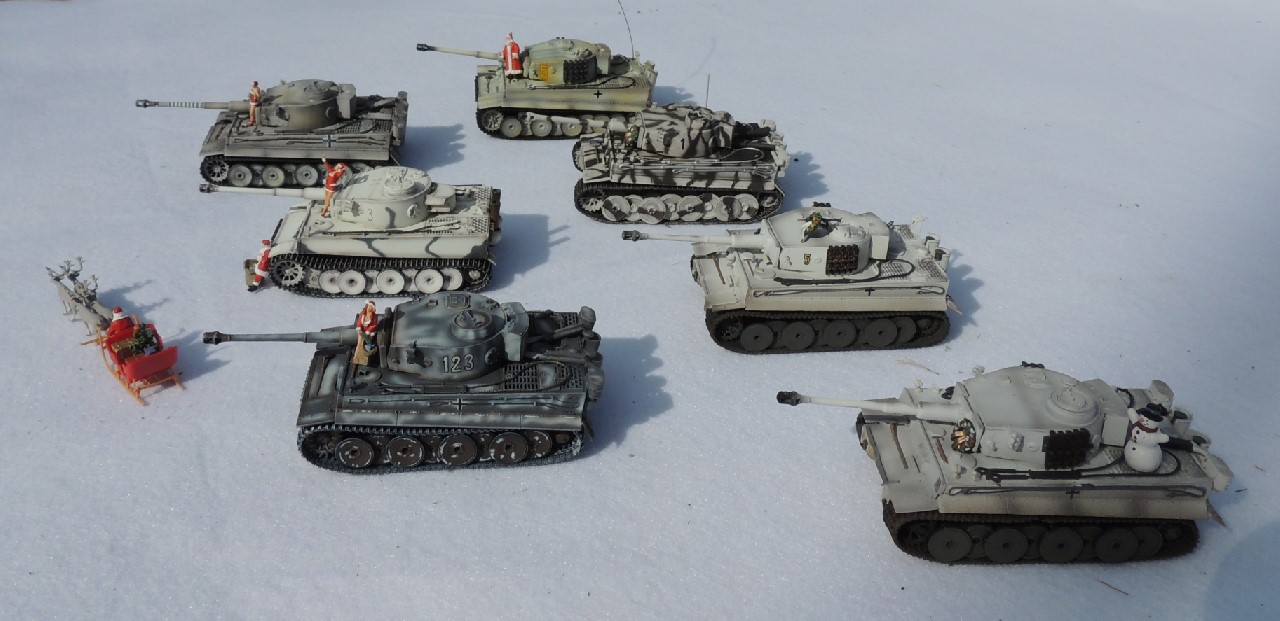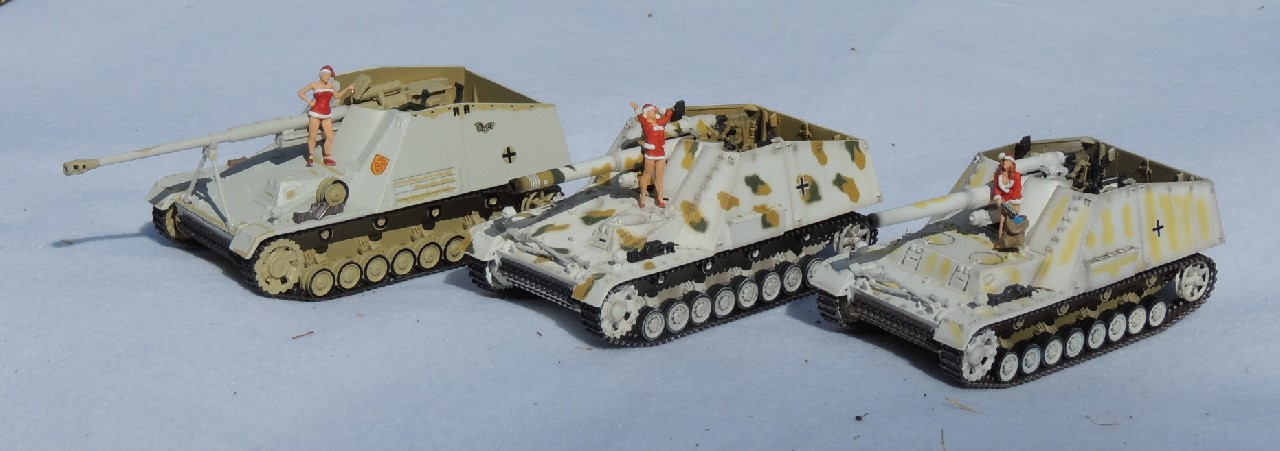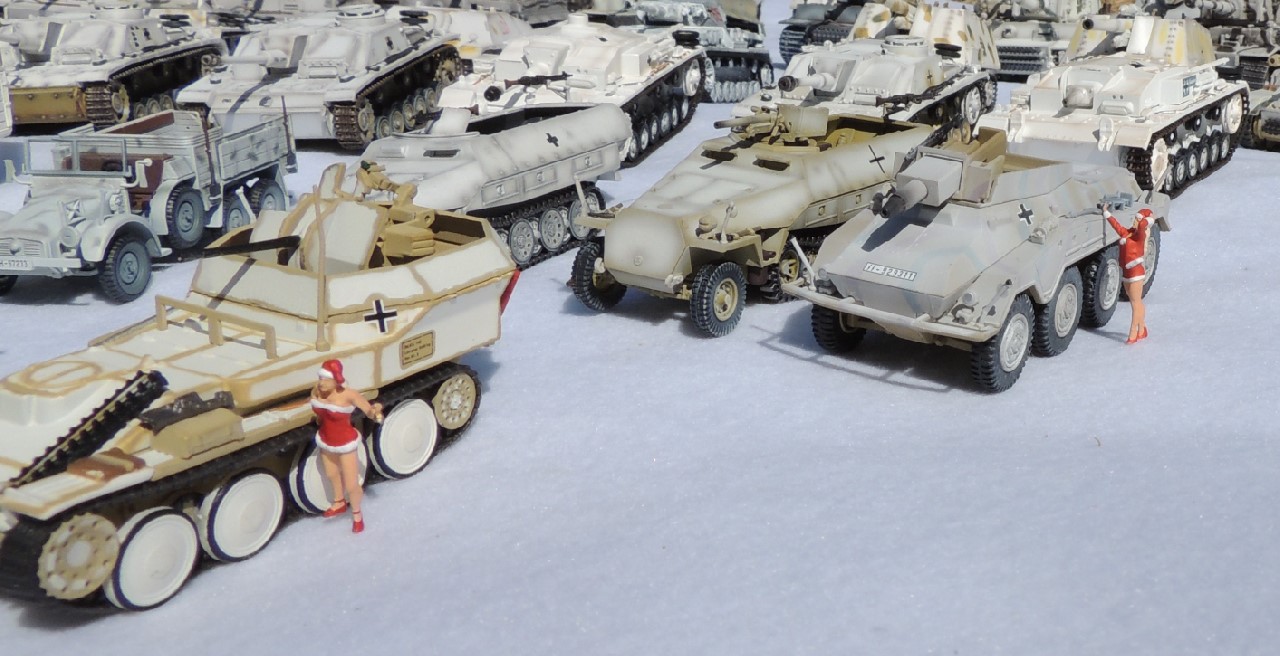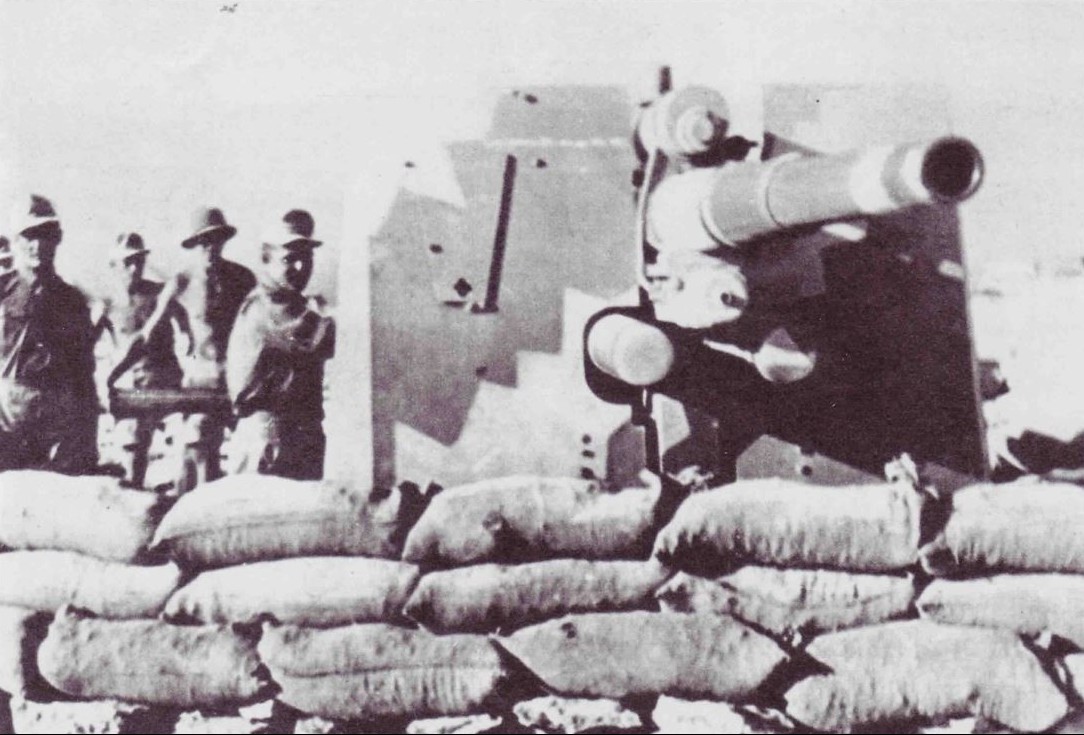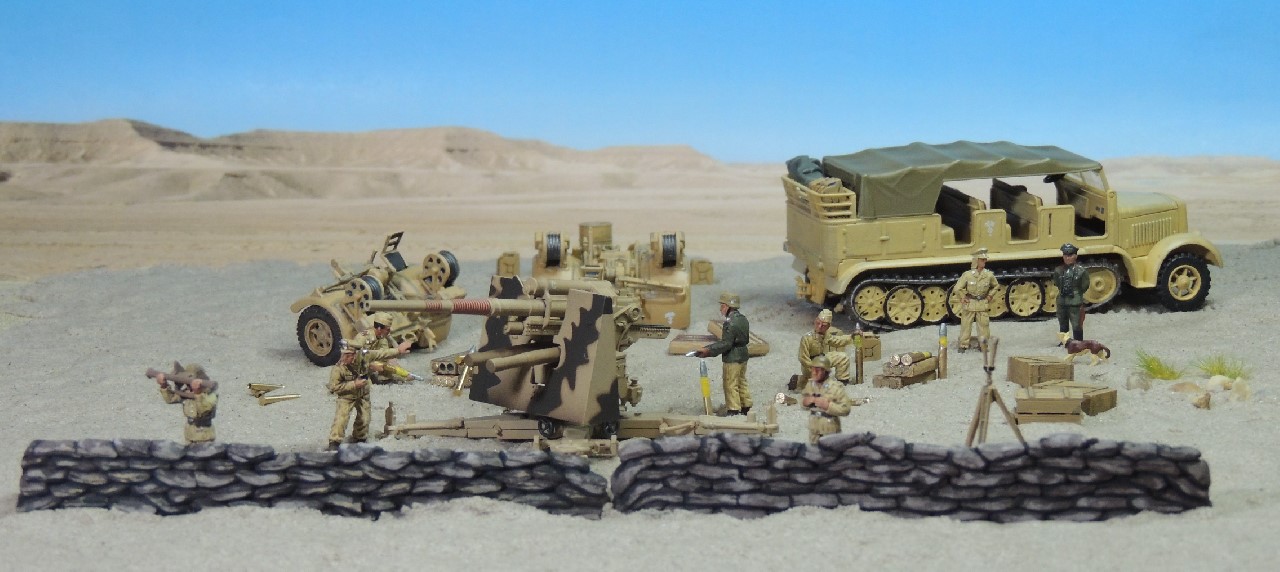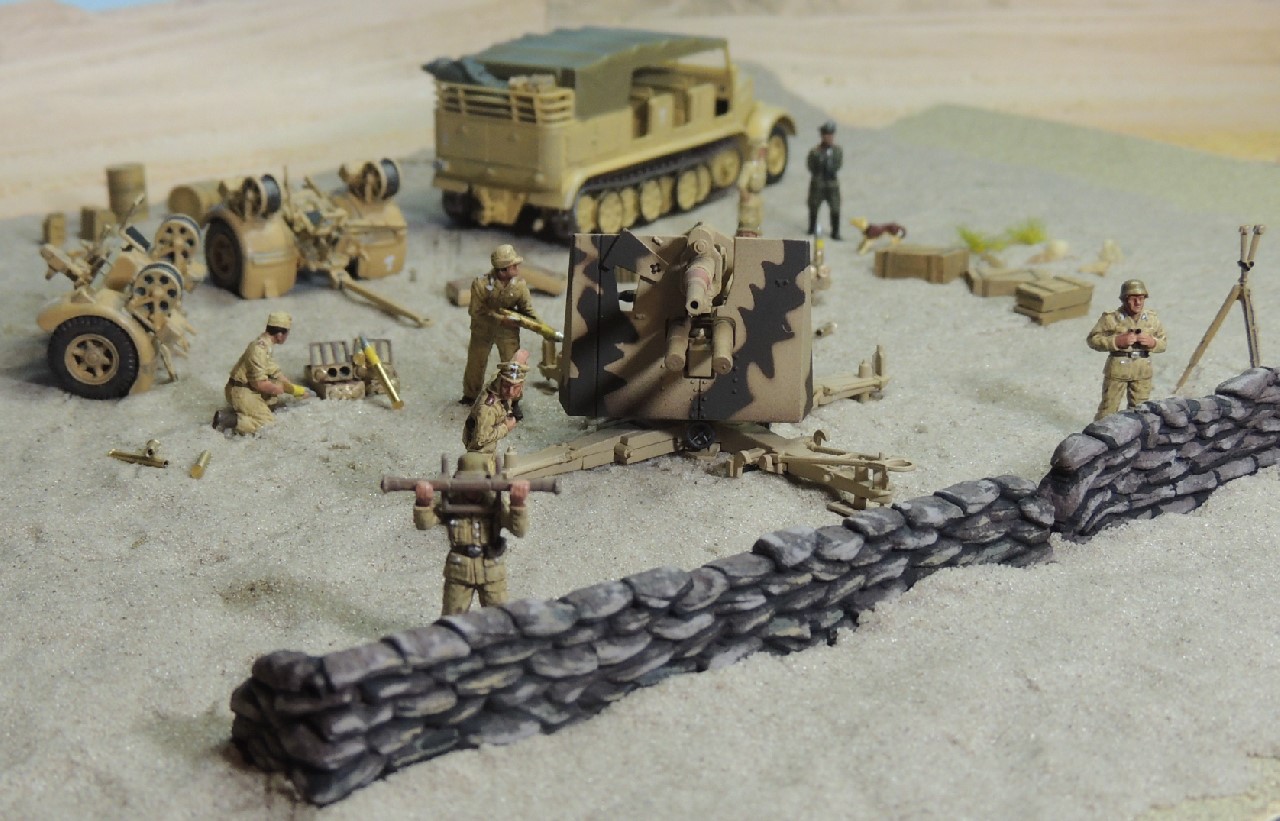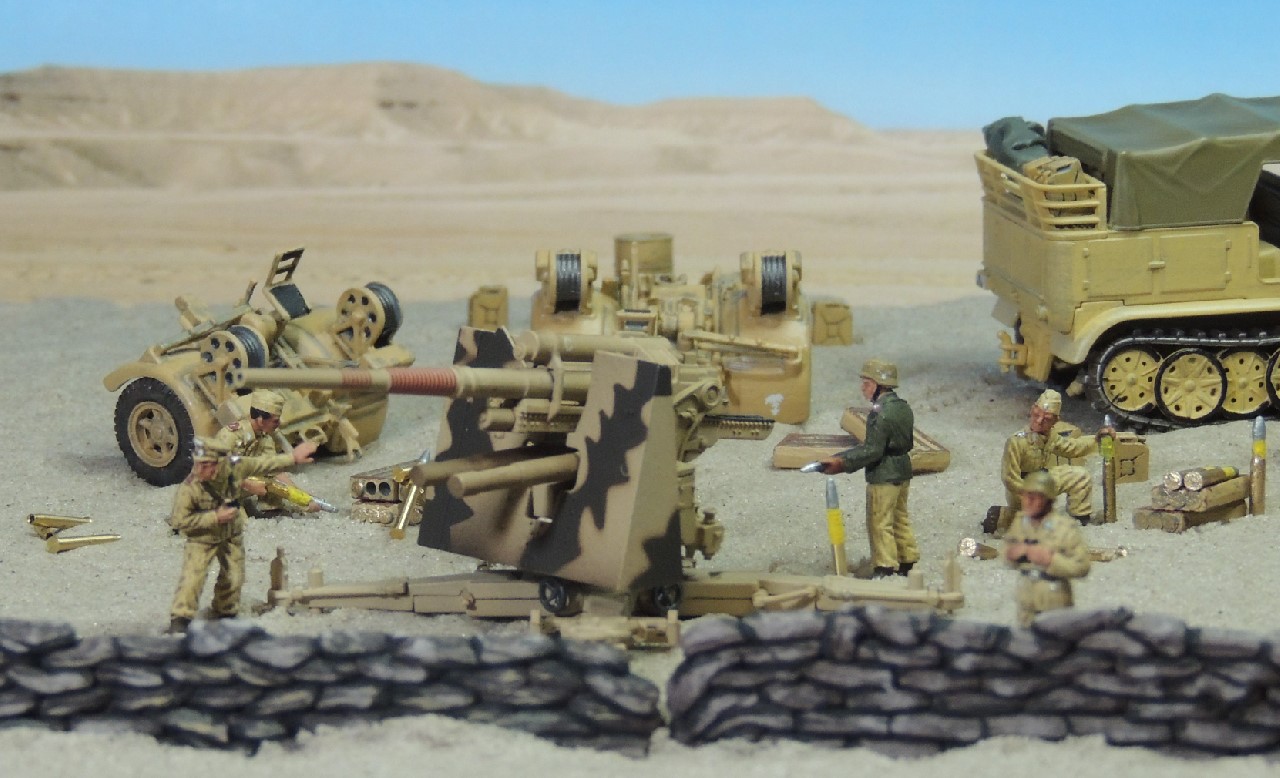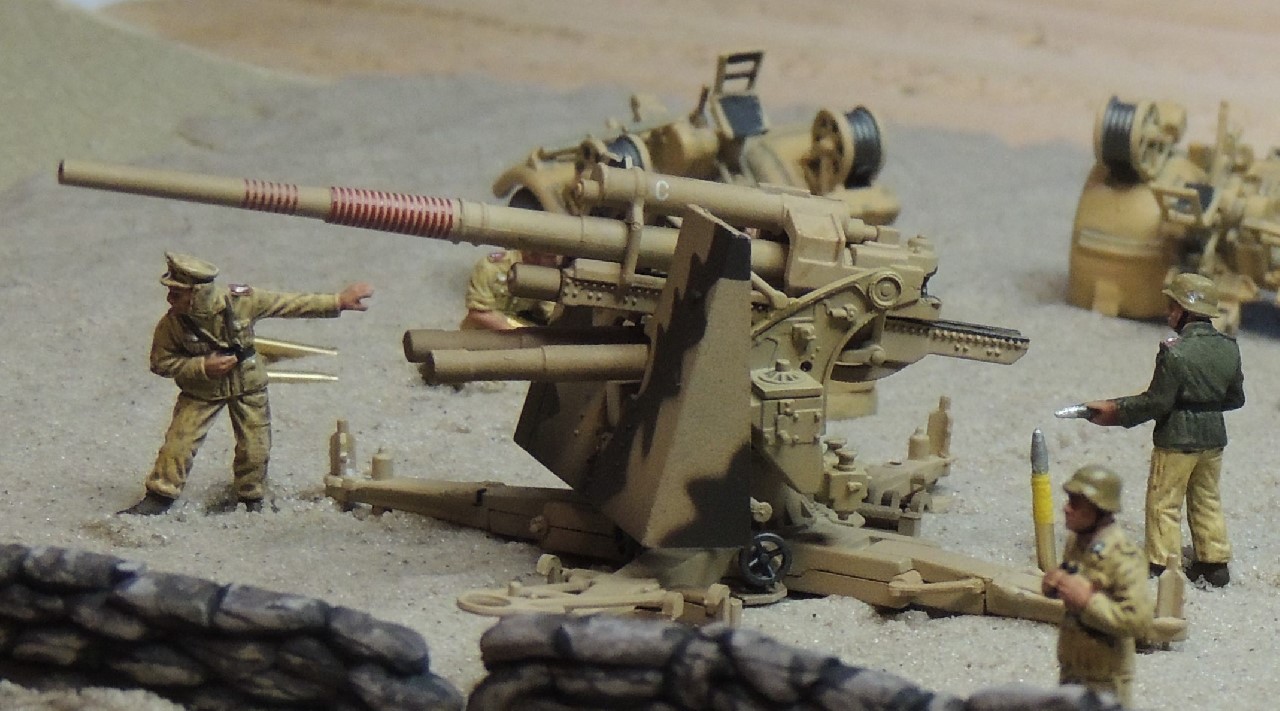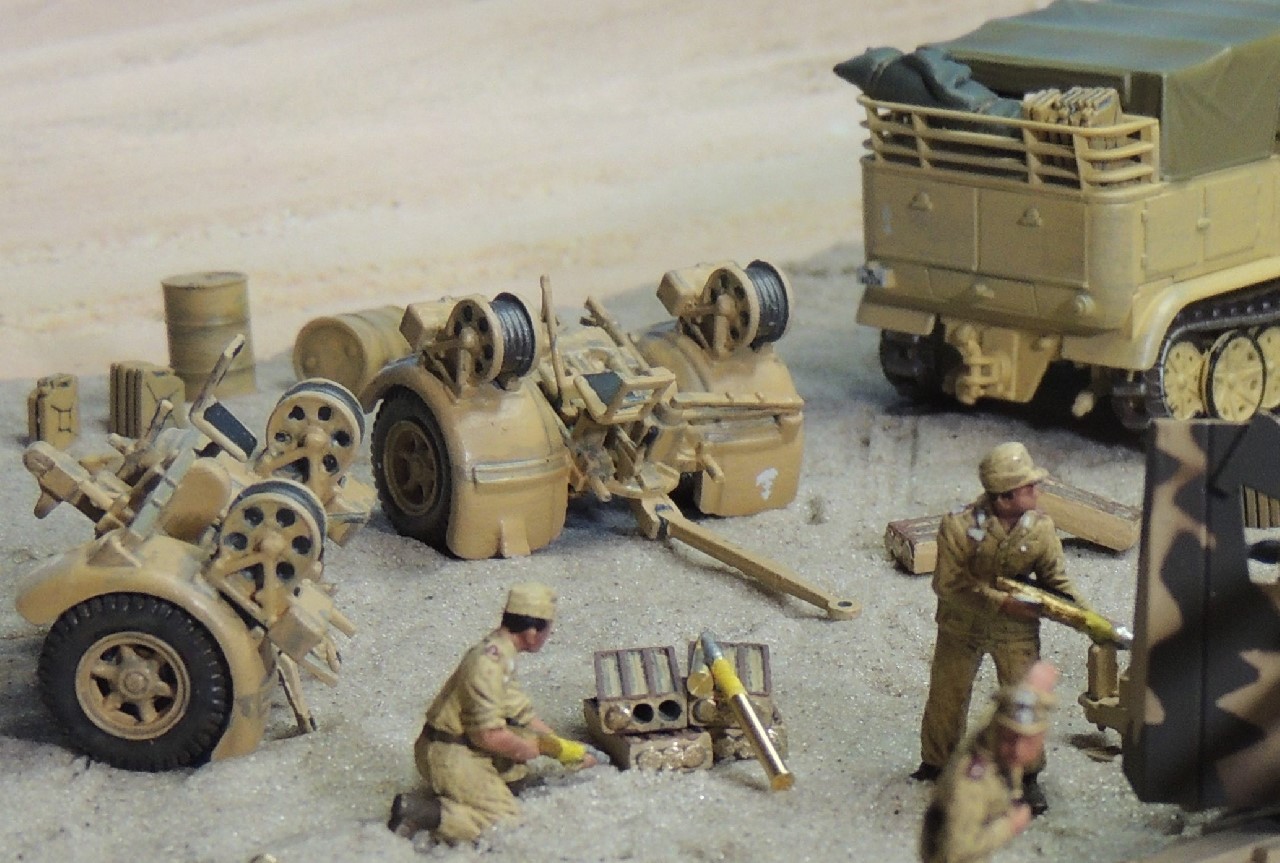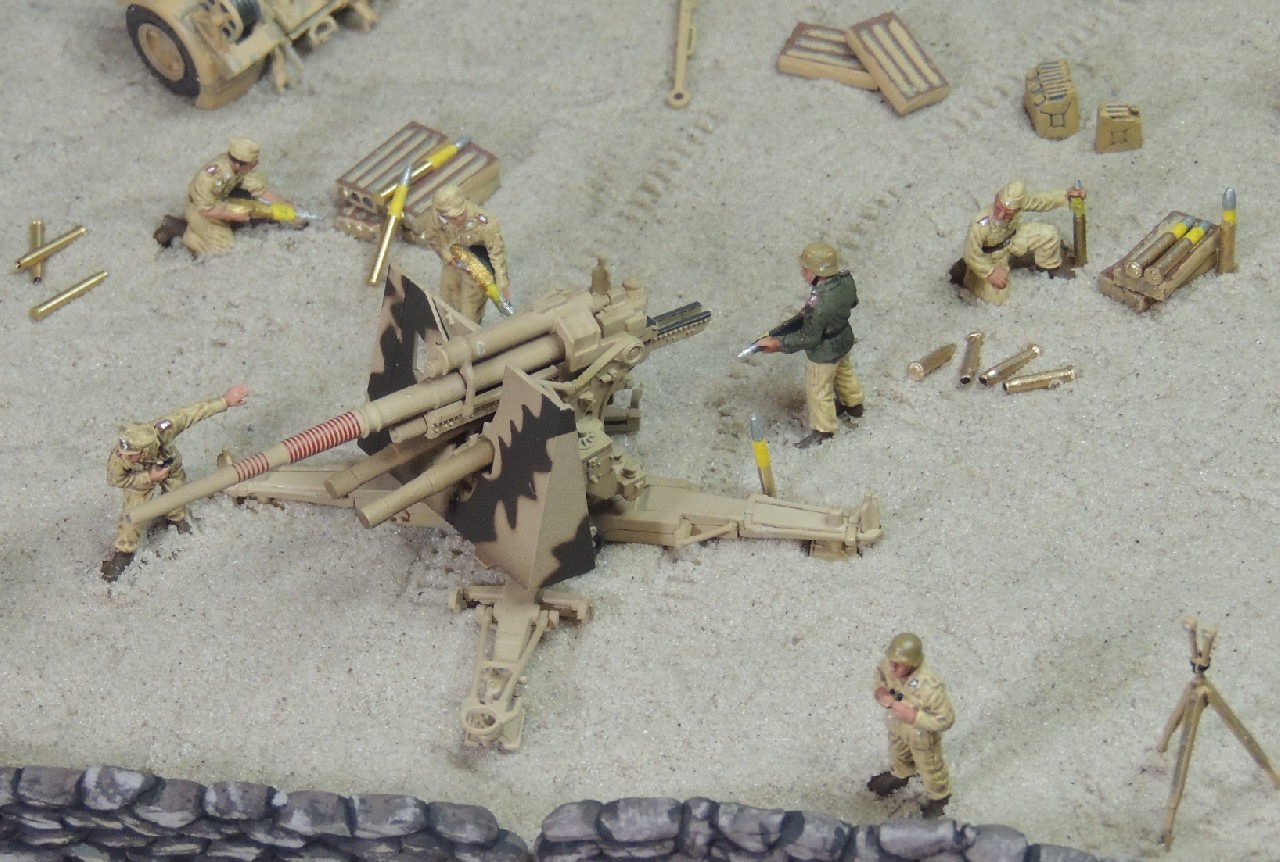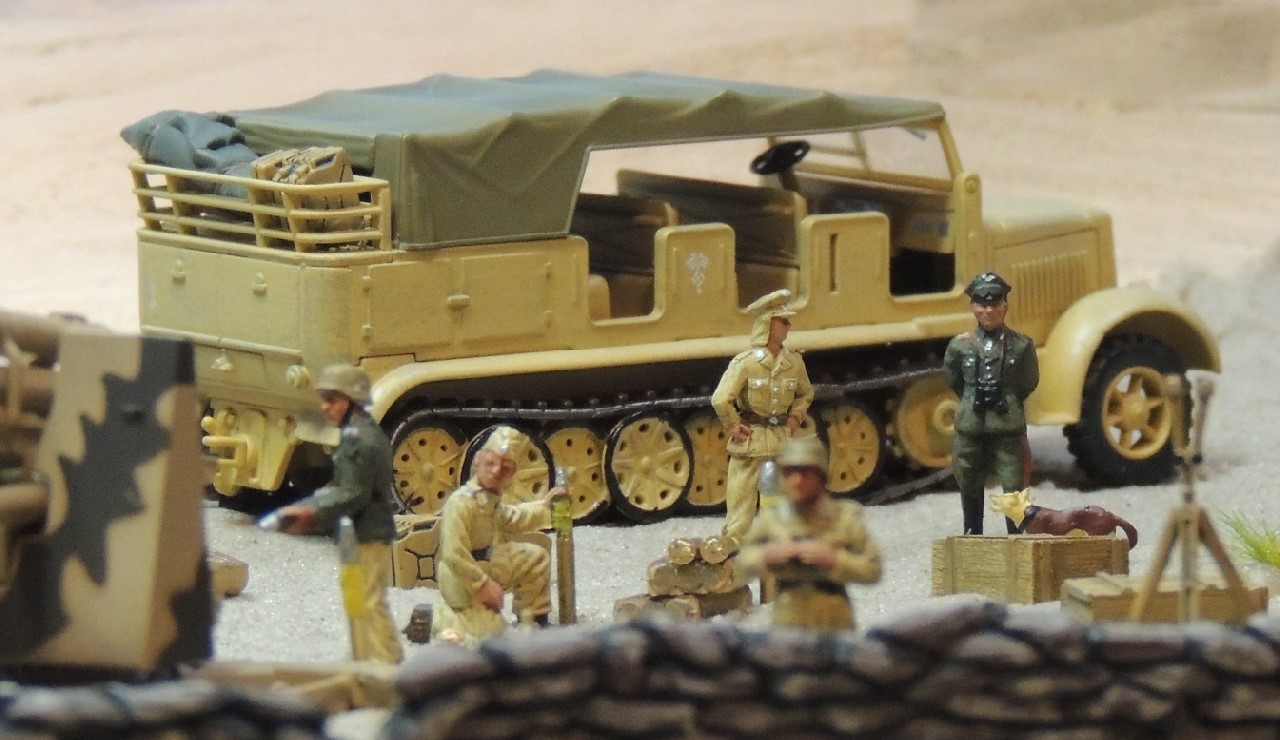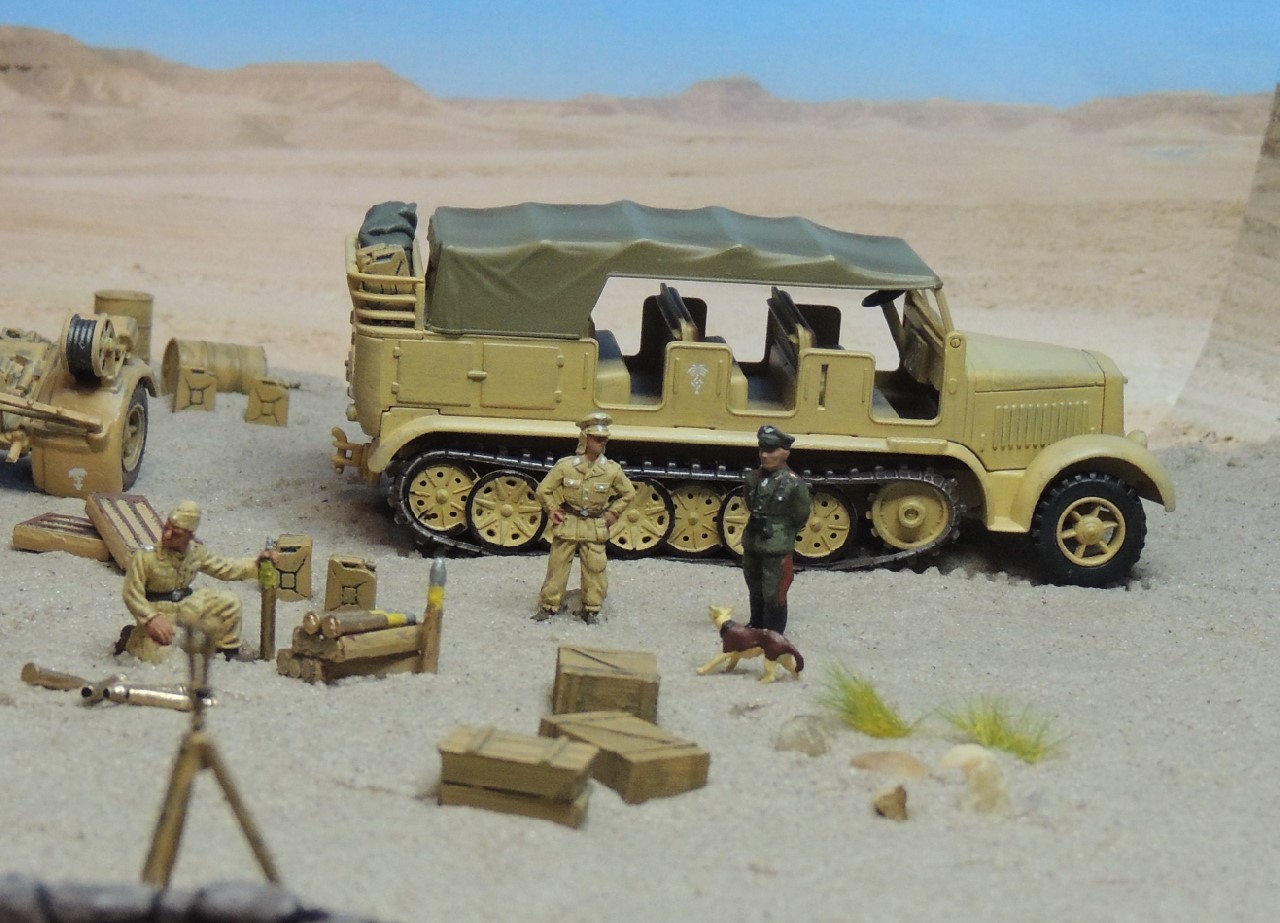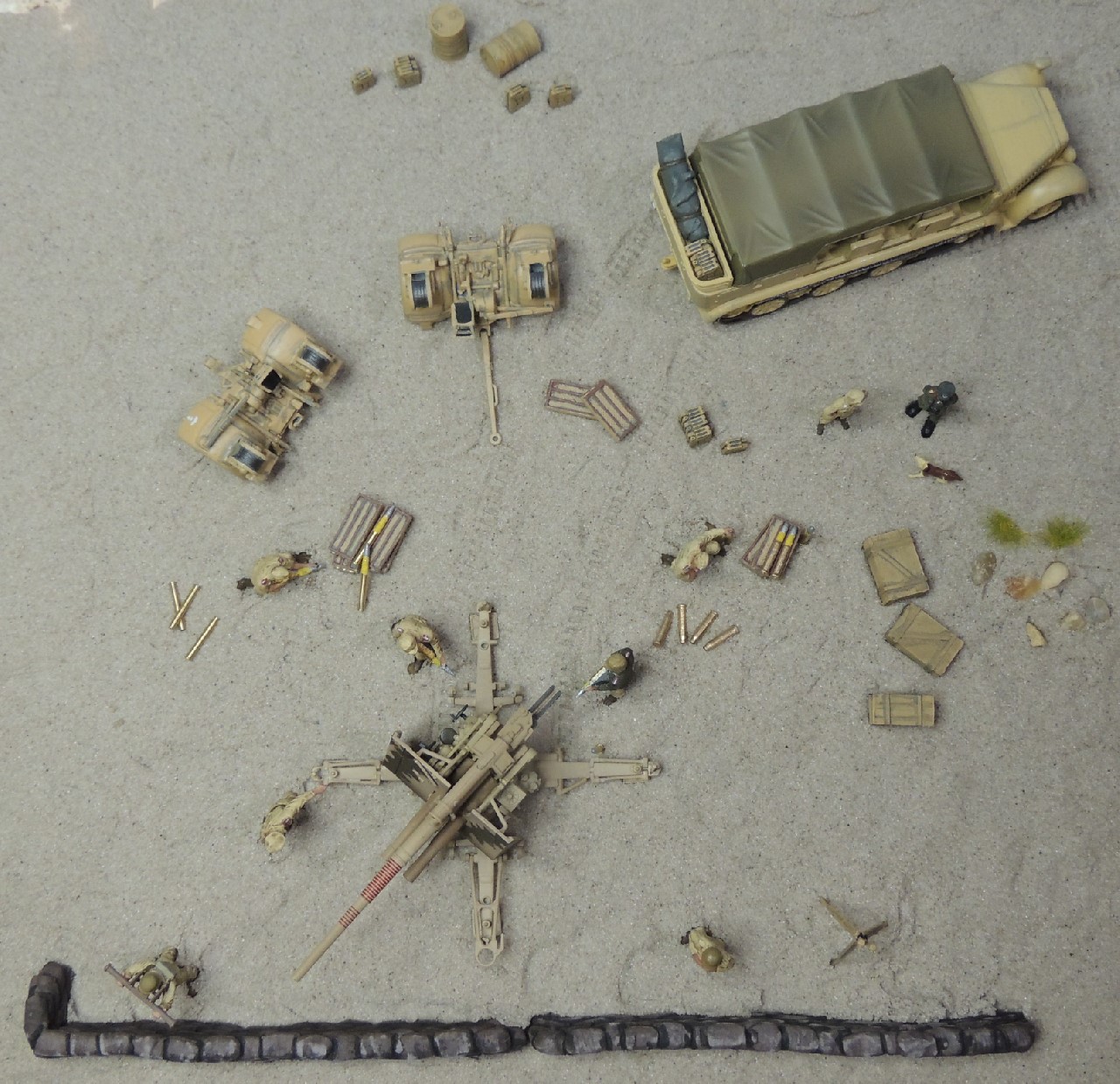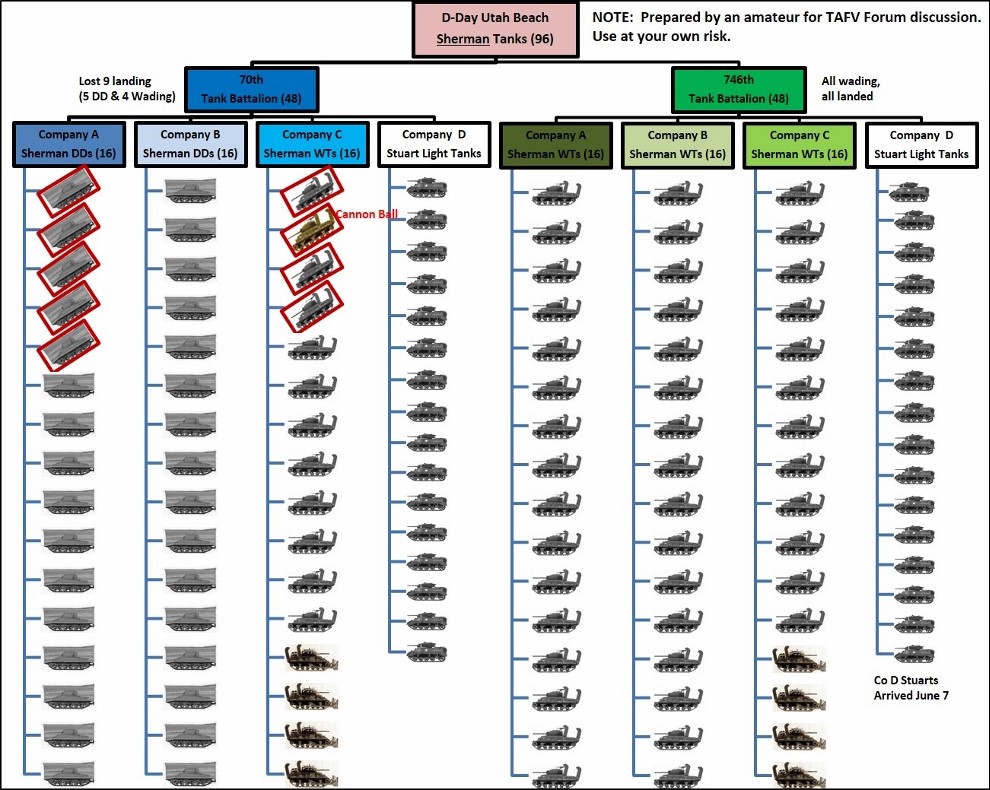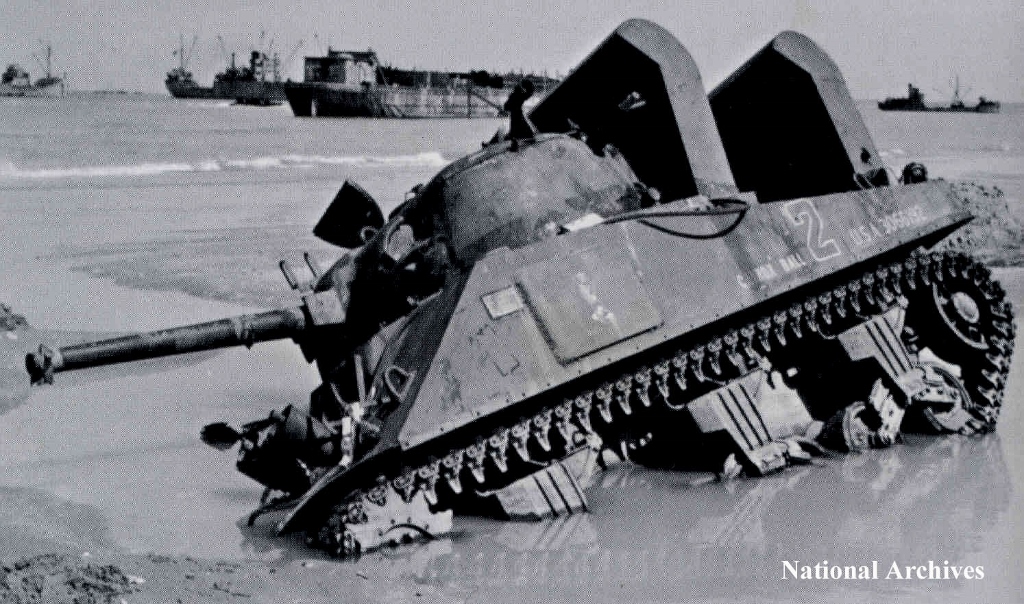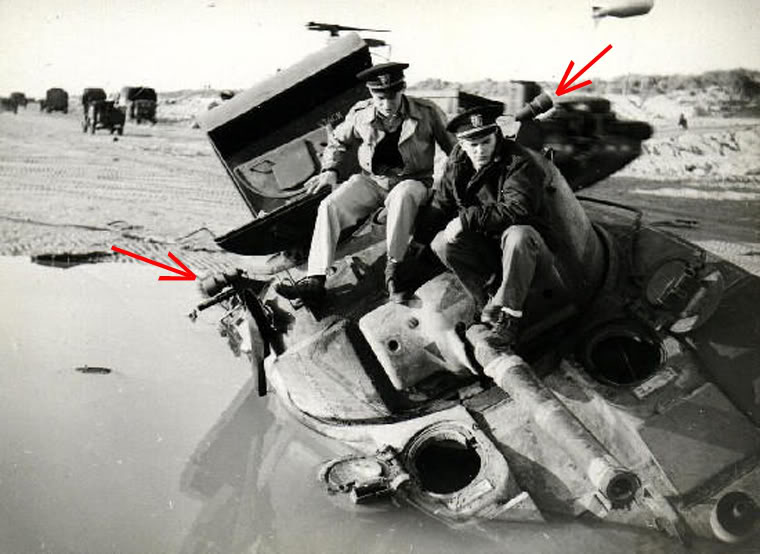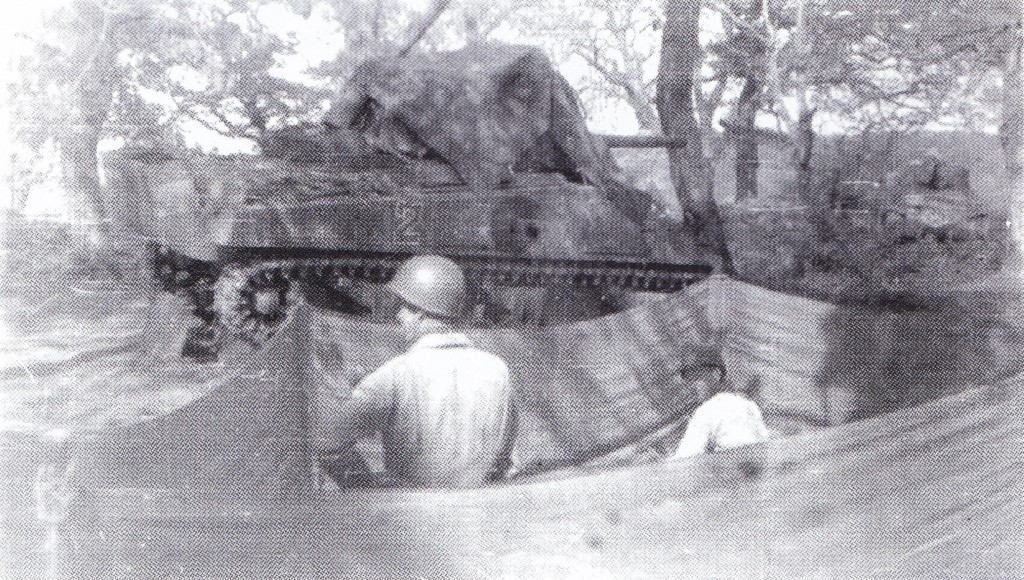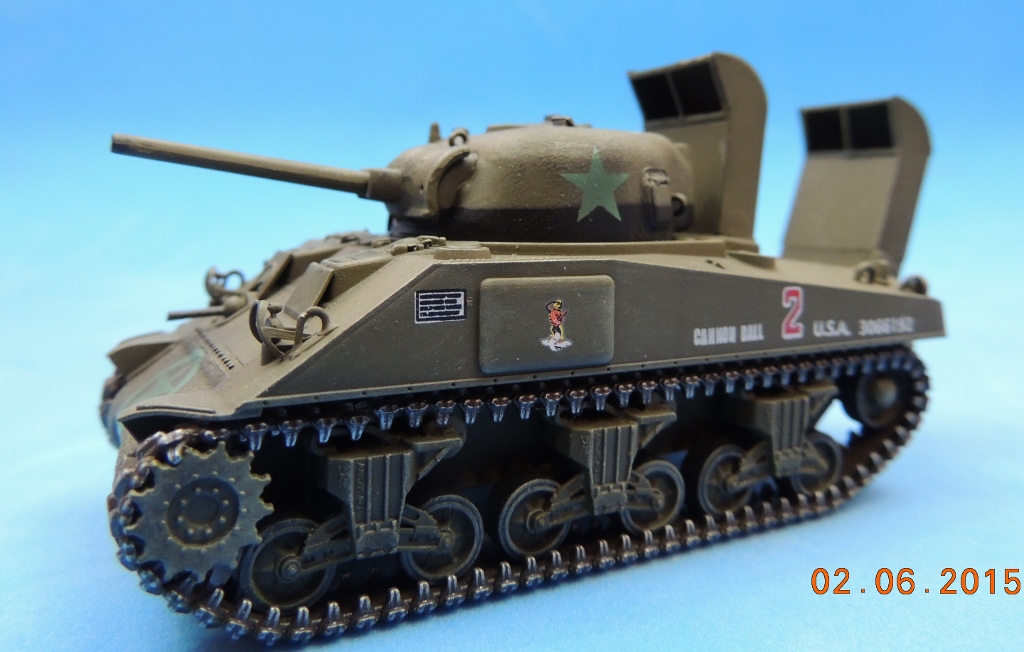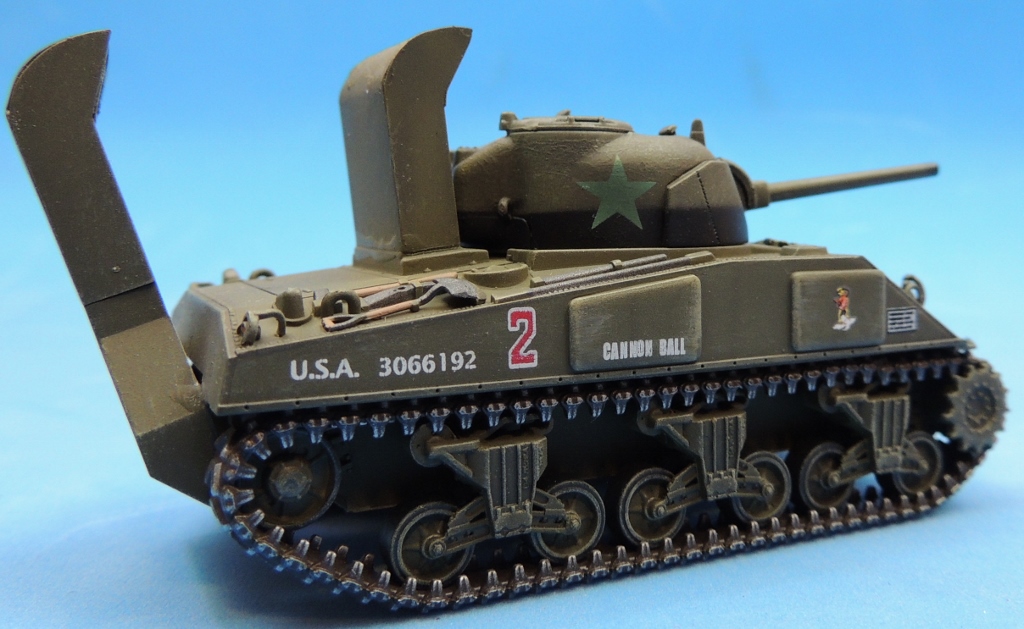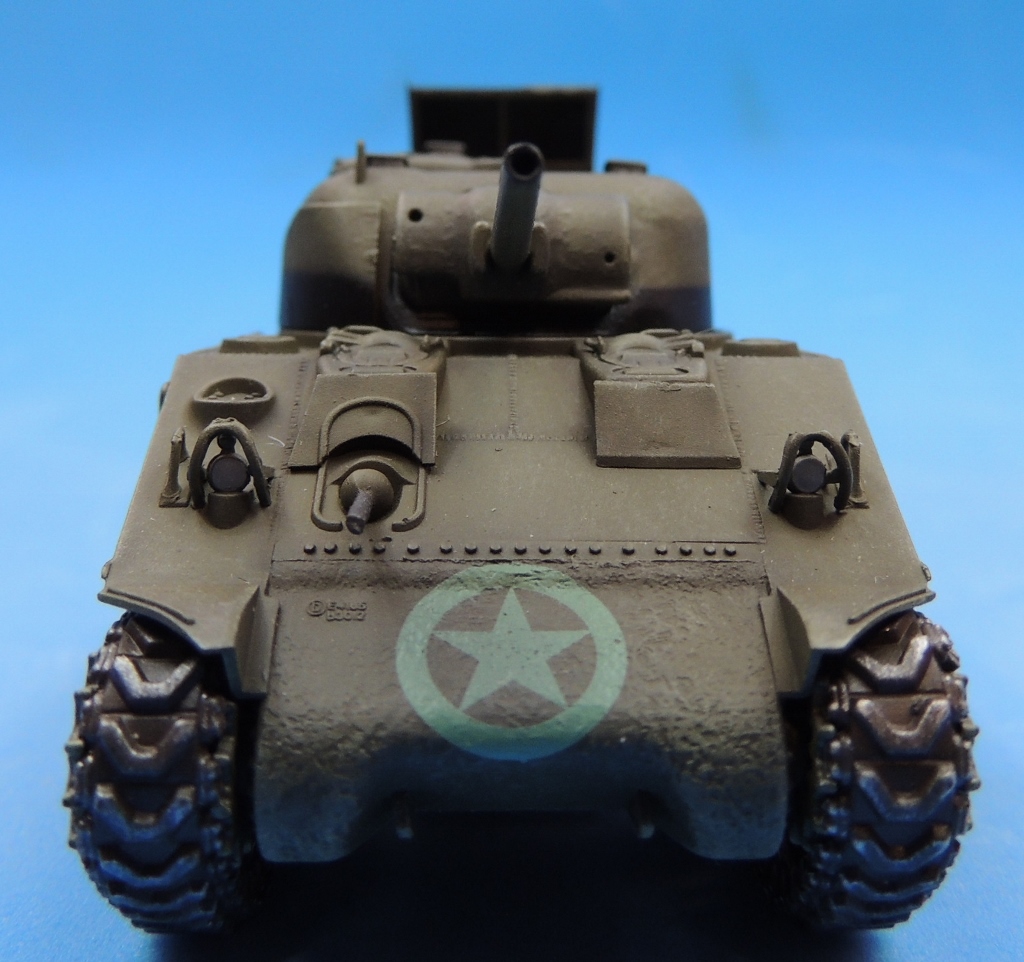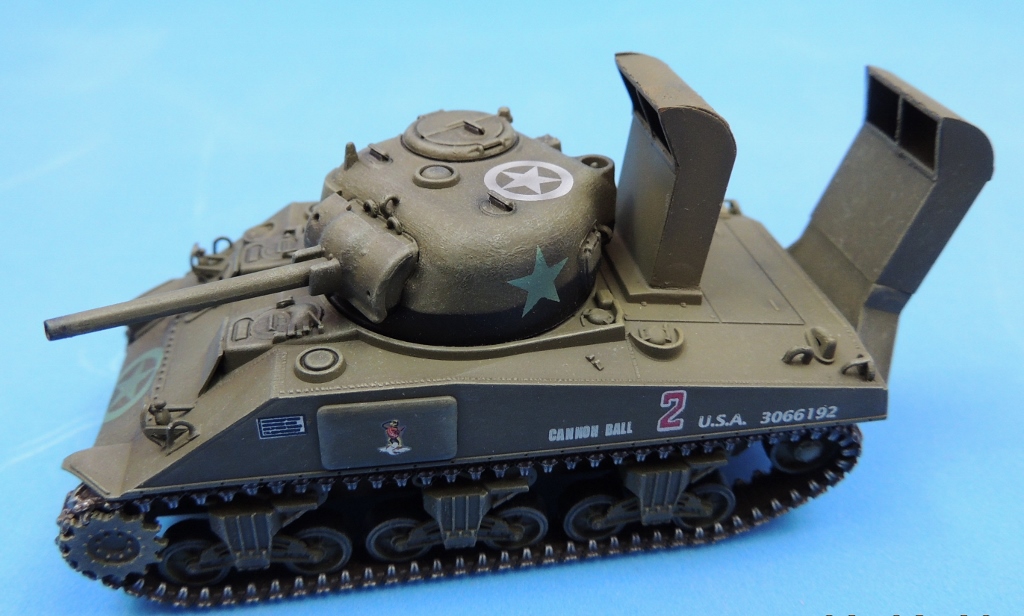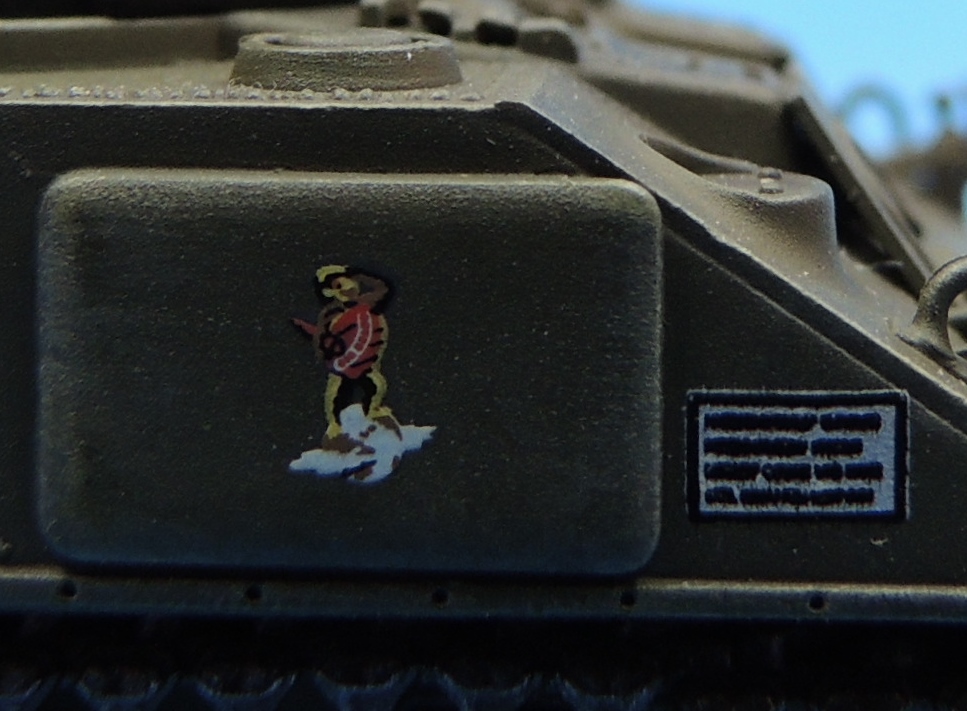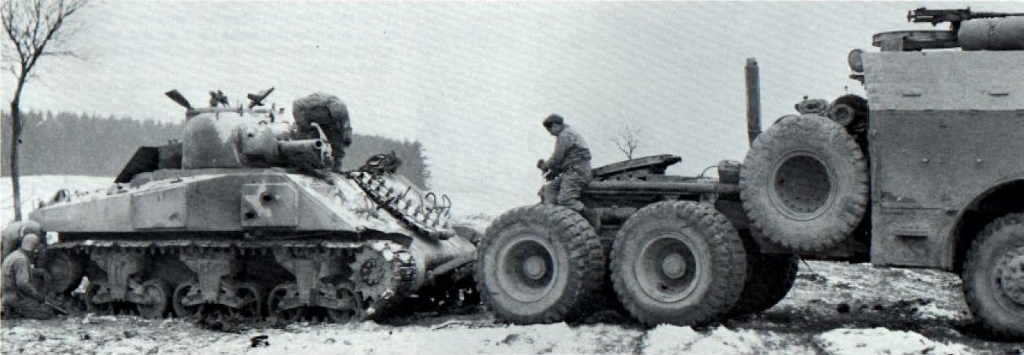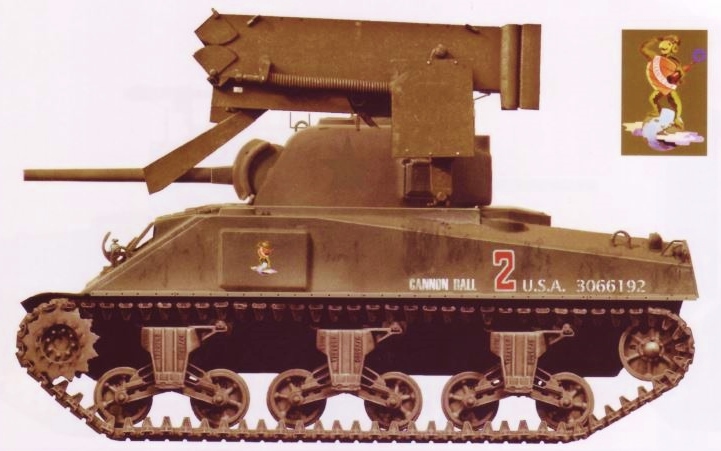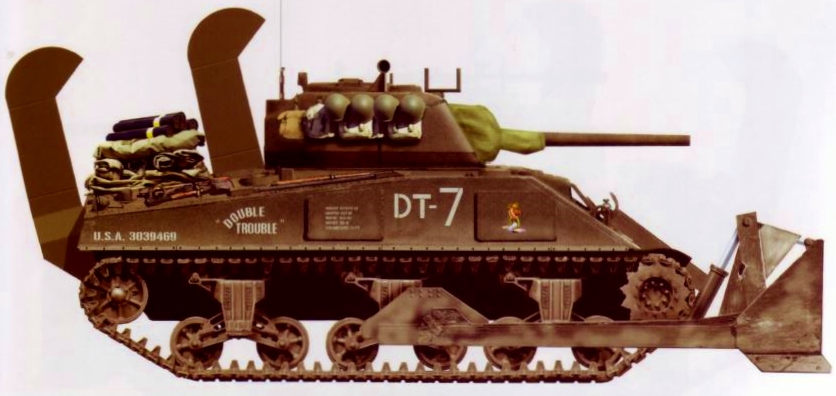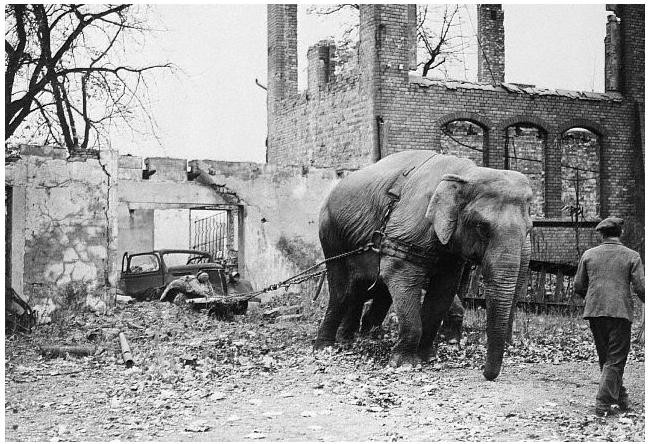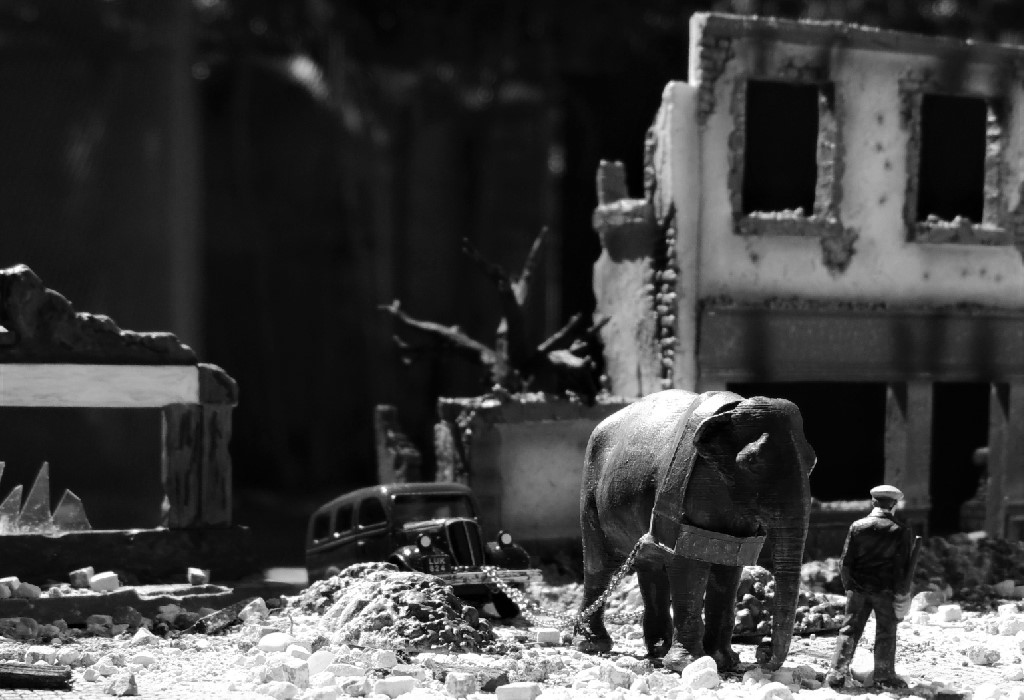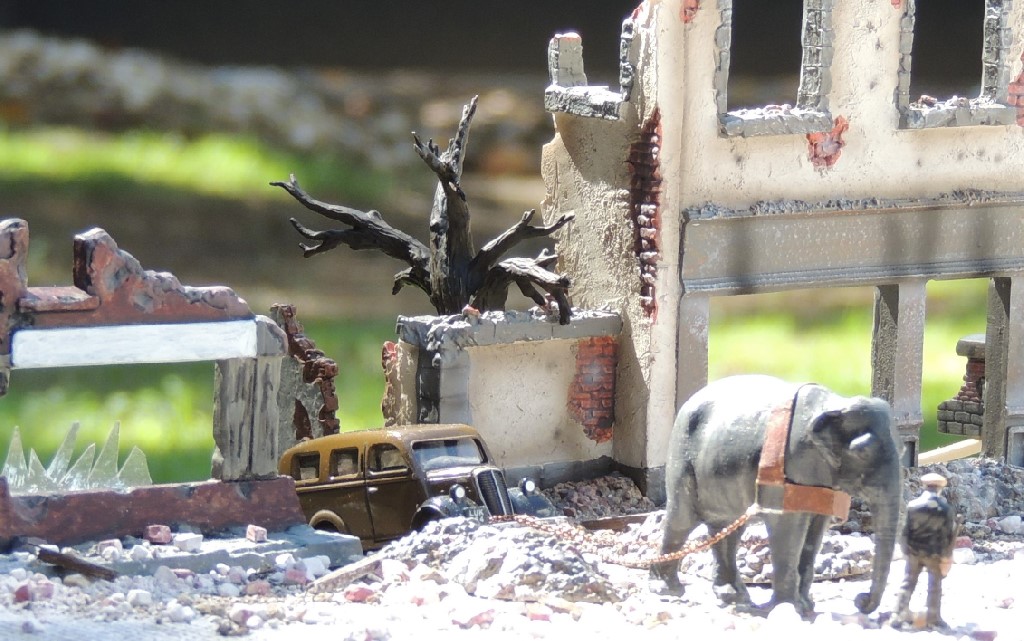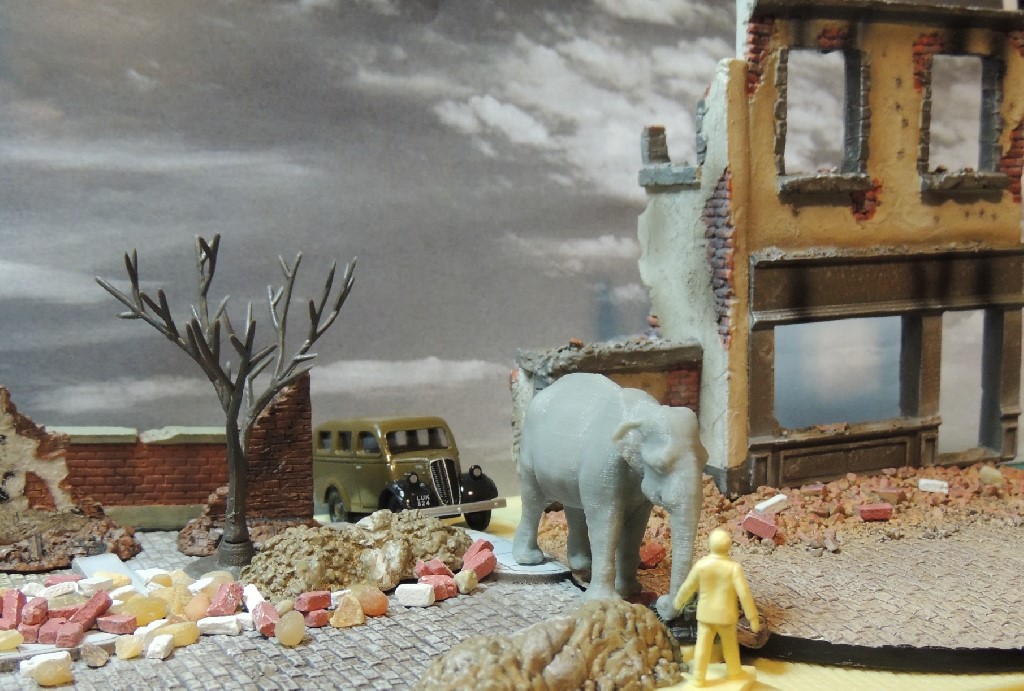I have consistently and unabashedly stated my somewhat juvenile affinity for tanks with distinctive markings or colorful artwork. I’m hardly alone in this view, as the KV-1 “Besposhadniy” – meaning “Merciless” – is one of the best known Russian tanks of the Great Patriotic War. Its vaunted kill record – 12 tanks plus numerous other vehicles and guns – certainly contributes to its mystique, as does the fact that artists, poets, and dancers, whose names appear on the sides of the turret, donated the funds to purchase it. The patriotic poem carried on its turret undoubtedly adds to its celebrity, and its skipper, ace Lt. Pavel Khoroshilov, further augments its fame. Yet, I submit that it’s the distinctive and irresistible artwork on the sides of its turret that sets it apart from others, for who could forget a cartoon depicting Hitler being blown to smithereens by volleys from a tank with a red star? The cartoon is an apt metaphor for the resolution of the German-Russian conflict in WWII.
The Actual Tank
The “Besposhadniy” belonged to the Soviet 12th Tank Regiment, 1st Moscow Motor Rifle Division, and fought the German 9th Army Group Center in what was for the Soviets the Western Front, in the winter-spring offensive of the Red Army in early 1943.
Below is a photo of the “Besposhadniy” from the Polish publication Stalin’s Tanks, Wydawnictwo Militaria 212. Note that this photo is from the early days of the “Besposhadniy,” as its occupants had yet to paint kill marks on the sides towards the back of the turret.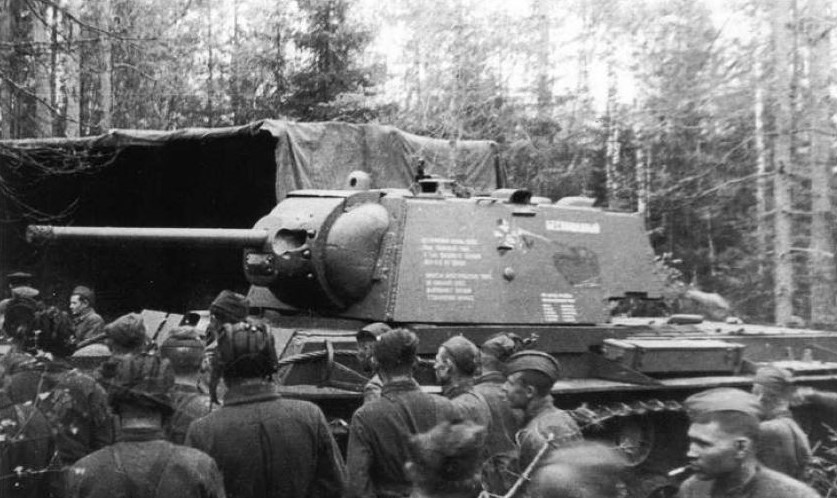 This photo, from Stalin’s Heavy Tanks 1941-1945: The KV and IS Heavy Tanks (Concord 7012) by Steven Zaloga et al, provides a clear shot of the geometric kill marks added by the crew as their victims accumulated.
This photo, from Stalin’s Heavy Tanks 1941-1945: The KV and IS Heavy Tanks (Concord 7012) by Steven Zaloga et al, provides a clear shot of the geometric kill marks added by the crew as their victims accumulated. According to Soviet Heavy Tanks (Osprey Vanguard 24) by Steven Zaloga and James Grandsen, the stars, disks, and triangles represent 12 tanks, 10 trucks, 7 armored cars, 7 mortars, 5 motorcycles, 4 anti-tank guns, 3 artillery pieces, a staff bus, and a partridge in a pear tree.
According to Soviet Heavy Tanks (Osprey Vanguard 24) by Steven Zaloga and James Grandsen, the stars, disks, and triangles represent 12 tanks, 10 trucks, 7 armored cars, 7 mortars, 5 motorcycles, 4 anti-tank guns, 3 artillery pieces, a staff bus, and a partridge in a pear tree.
This photo of Paul Khoroshilov, the tank commander, taken from the “Paul Khoroshilov” entry (“Хорошилов Павел”) on the Russian Wikipedia, provides a clear view of the patriotic poem on the sides of the “Besposhadniy.”
According to Zaloga and Grandsen in Soviet Heavy Tanks, the Russian inscription on the front part of the turret sides is a poem that translates thus:
Storming through fire goes
Our KV heavy tank
From the heartland it rolls
To smash the Nazi flank
Crewed by heroic men
Never showing fear
As they carry out commands
Of their homeland dear
This front-view photo of the “Besposhadniy,” shows that it carried its name on the upper glacis plate. I found references – though no photo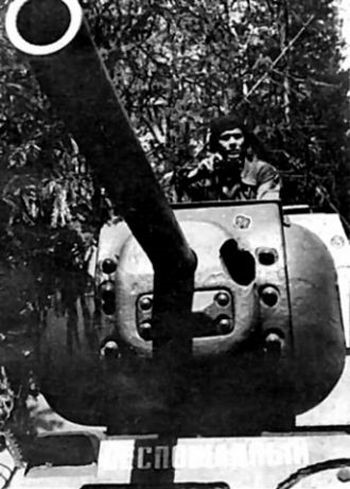 graphic evidence — that claimed the tank also carried its name on the rear part of the turret.
graphic evidence — that claimed the tank also carried its name on the rear part of the turret.
Although the markings on this last photo of the starboard side of the “Besposhadniy” are barely visible and almost indiscernible, the photo does provide an excellent view of the drive sprocket, idler, and later-type road wheels. Note also the sharp angle of the rear of the hull.
The Hobby Master Model
Even a passing glance at the following photos of the Hobby Master HG3010 quickly reveals that HM has produced a beauty of a model. The finish is superb, with subtle shades of the base color throughout the tank. You will also notice a finely applied wash on the turret that brings out the bolts on the mantlet. Note also the realistic tow chains on the front plate that extend to the middle of the hull. They’re as realistic as can be found in 1/72 scale. Note also the silver dry brushing on the tracks that make the detail pop out. On the down side, note that the name of the tank is missing from the glacis.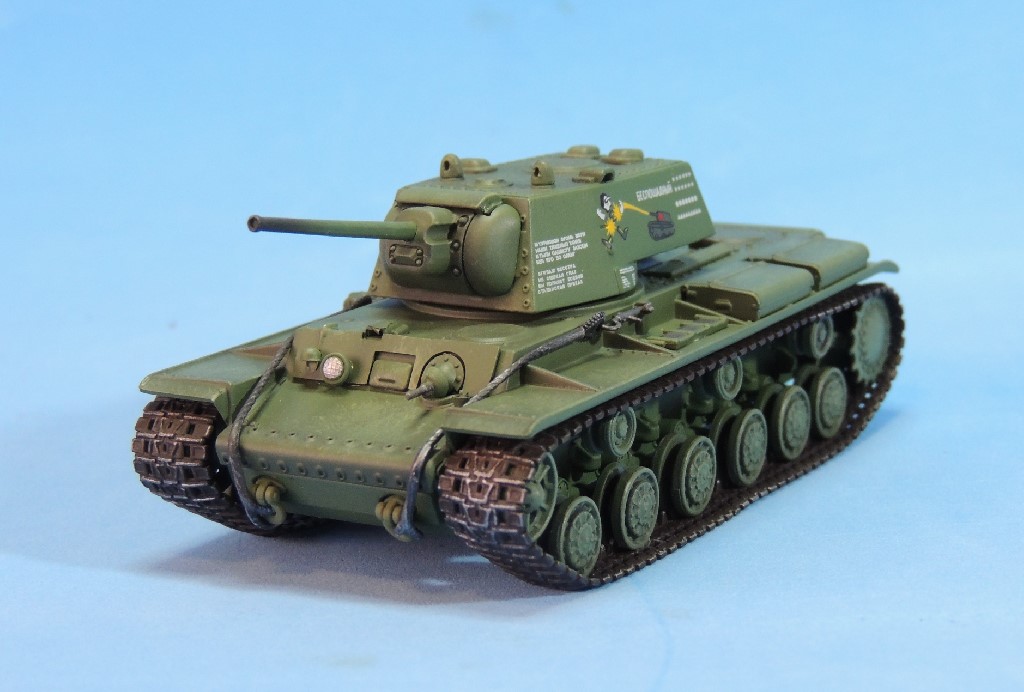 This profile shot shows off the artwork and markings on the turret well. The road wheels used by HM are the earlier road wheels found on KV-1s and are clearly incorrect, as can be easily seen in the starboard side photo of the actual tank above.
This profile shot shows off the artwork and markings on the turret well. The road wheels used by HM are the earlier road wheels found on KV-1s and are clearly incorrect, as can be easily seen in the starboard side photo of the actual tank above.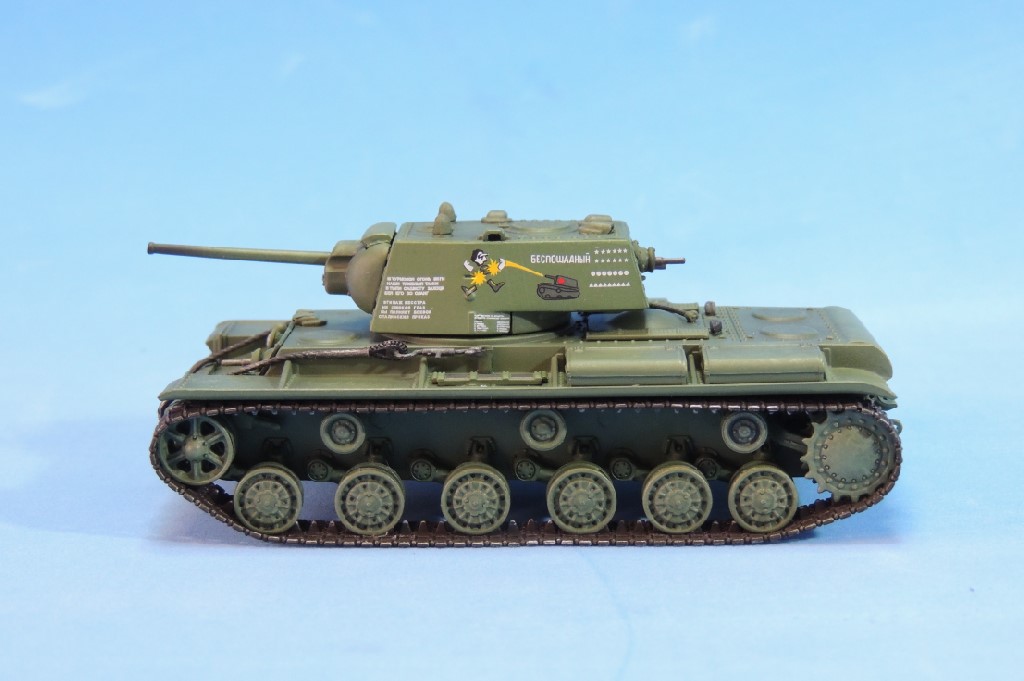 This photo of the starboard side of the model shows that HM used the mirror image of the markings on the port side. Note that there are no kill marks on the starboard side, which looks to be correct from the photo above.
This photo of the starboard side of the model shows that HM used the mirror image of the markings on the port side. Note that there are no kill marks on the starboard side, which looks to be correct from the photo above.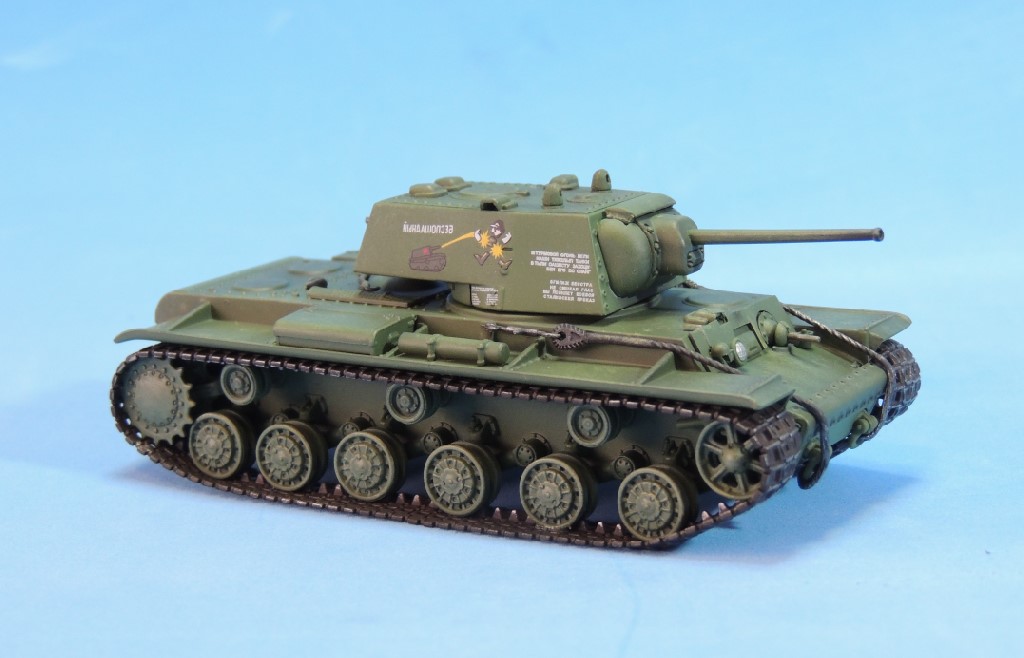 This last photo from the rear shows that HM used the KV-1 hull with the gently curved rear. Again, the side photo of the actual tank conclusively reveals that this is incorrect. The rear of the hull should have been sharply angled.
This last photo from the rear shows that HM used the KV-1 hull with the gently curved rear. Again, the side photo of the actual tank conclusively reveals that this is incorrect. The rear of the hull should have been sharply angled. 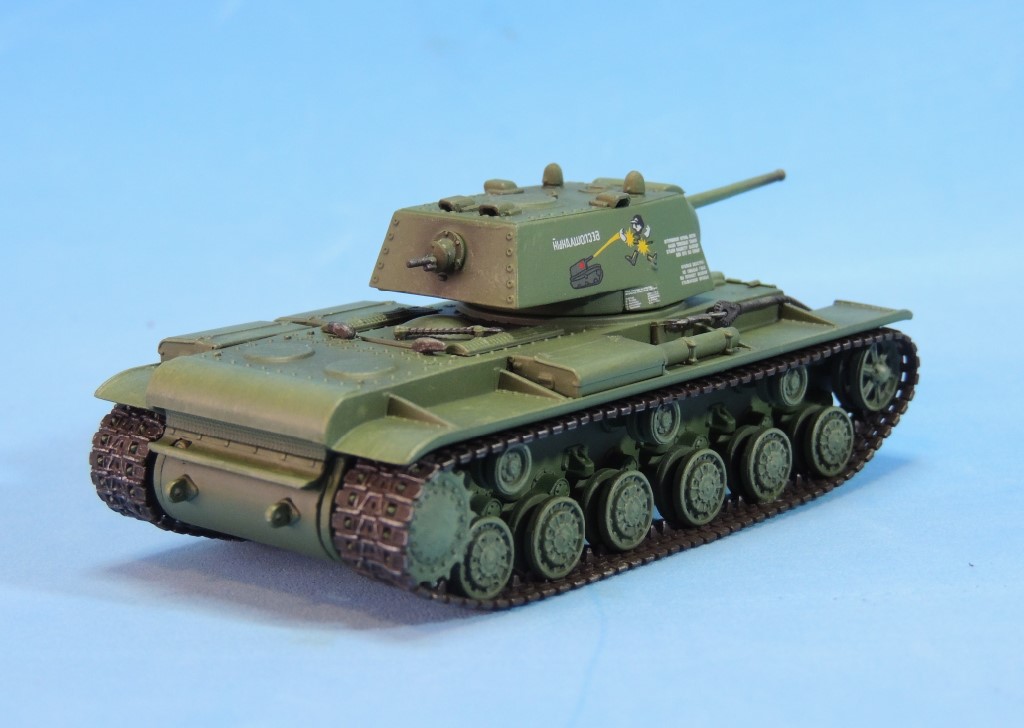 Here’s a close-up photo of the HM turret. The two columns of text just below the Hitler cartoon comprise a list of artists, poets, and dancers who pooled their resources to donate the tank, naming it “Besposhadniy” to distinguish it from other tanks. Interestingly, among them is Sergey Mikhalkov, commissioned by Stalin in 1944 to write the lyrics of the Soviet National Anthem, and almost 60 years later, in 2001, by Putin to write the National Anthem of Russia.
Here’s a close-up photo of the HM turret. The two columns of text just below the Hitler cartoon comprise a list of artists, poets, and dancers who pooled their resources to donate the tank, naming it “Besposhadniy” to distinguish it from other tanks. Interestingly, among them is Sergey Mikhalkov, commissioned by Stalin in 1944 to write the lyrics of the Soviet National Anthem, and almost 60 years later, in 2001, by Putin to write the National Anthem of Russia.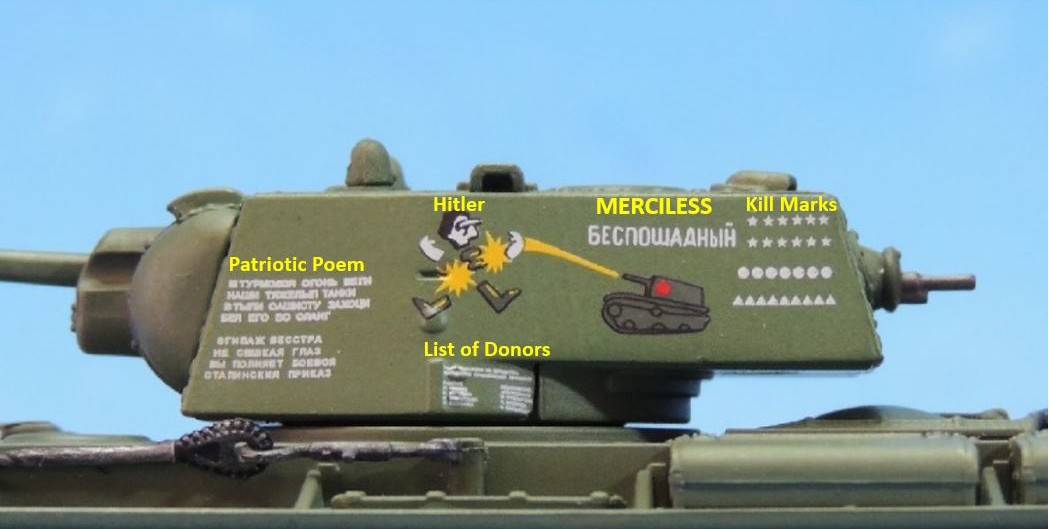 It’s plainly evident that the HM “Besposhadniy” is an awesome little model – a proud little replica of the original.
It’s plainly evident that the HM “Besposhadniy” is an awesome little model – a proud little replica of the original.
The Rub
So what’s the rub? And there’s always a rub! Well, in addition to using the wrong rear hull and road wheels, HM used the Model 1941 initial turret, rather than the Model 1941 up-armored turret. The three-way comparison below graphically demonstrates the problem. On the actual tank the bottom part of the turret goes straight back and then turns in behind the turret ring at a sharp 90-degree angle, whereas on the HM model it curves around the rear of the turret ring. The Easy Model version, on the other hand, used the correct turret, as discussed in the comparison section below.
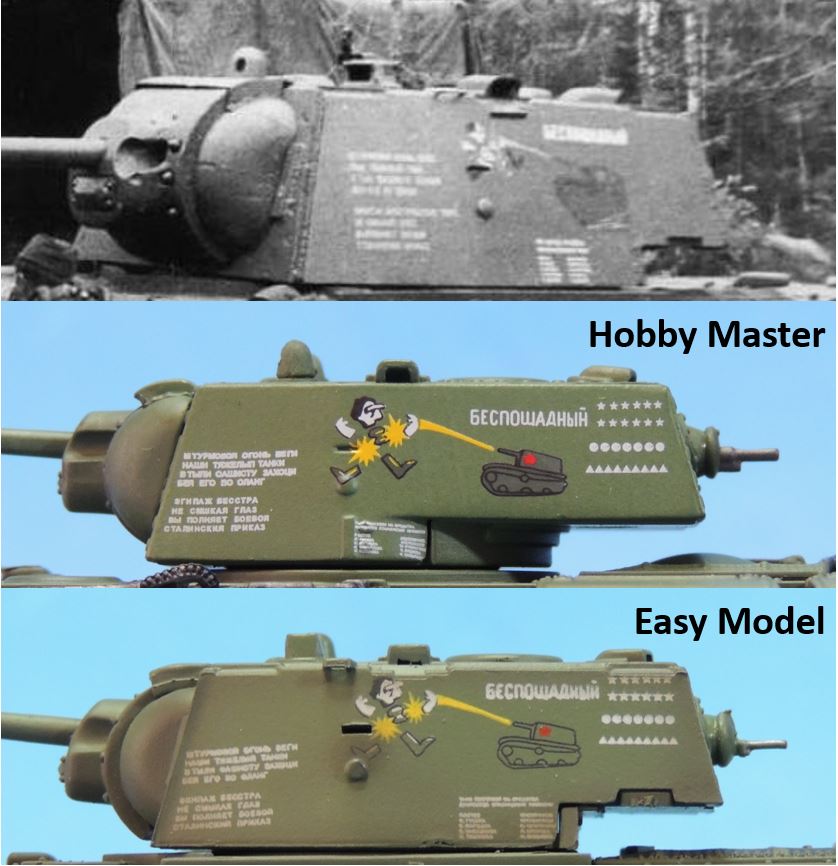 Secondly, as indicated above, HM used a mirror image of the port side graphics on the starboard side — literally — without regard to the fact that the name “Besposhadniy” would be backwards — as in a mirror. Thus, the port side carries the inscription “Беспощадный”; the inscription on the starboard side,
Secondly, as indicated above, HM used a mirror image of the port side graphics on the starboard side — literally — without regard to the fact that the name “Besposhadniy” would be backwards — as in a mirror. Thus, the port side carries the inscription “Беспощадный”; the inscription on the starboard side, ![]() , is gibberish — unless, like Da Vinci, you’re adept at mirror-reading.
, is gibberish — unless, like Da Vinci, you’re adept at mirror-reading.
Hobby Master / Easy Model Comparison
Let’s compare the HM version of the “Besposhadniy” with the Easy Model 36288. Here are five equivalent photos of the EM version.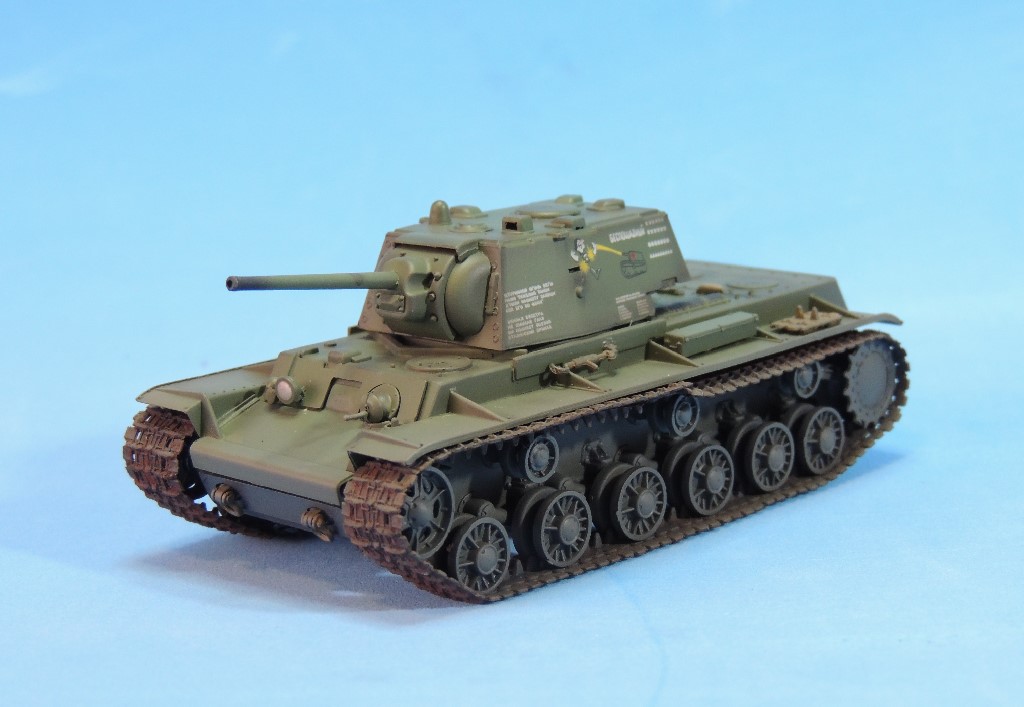 Like the HM, the EM lacks the name on the front plate. The EM also lacks the tow cable included on the HM. The EM version has a much darker shade and lacks any kind of dry brushing on the tracks. Here’s a portside view.
Like the HM, the EM lacks the name on the front plate. The EM also lacks the tow cable included on the HM. The EM version has a much darker shade and lacks any kind of dry brushing on the tracks. Here’s a portside view.
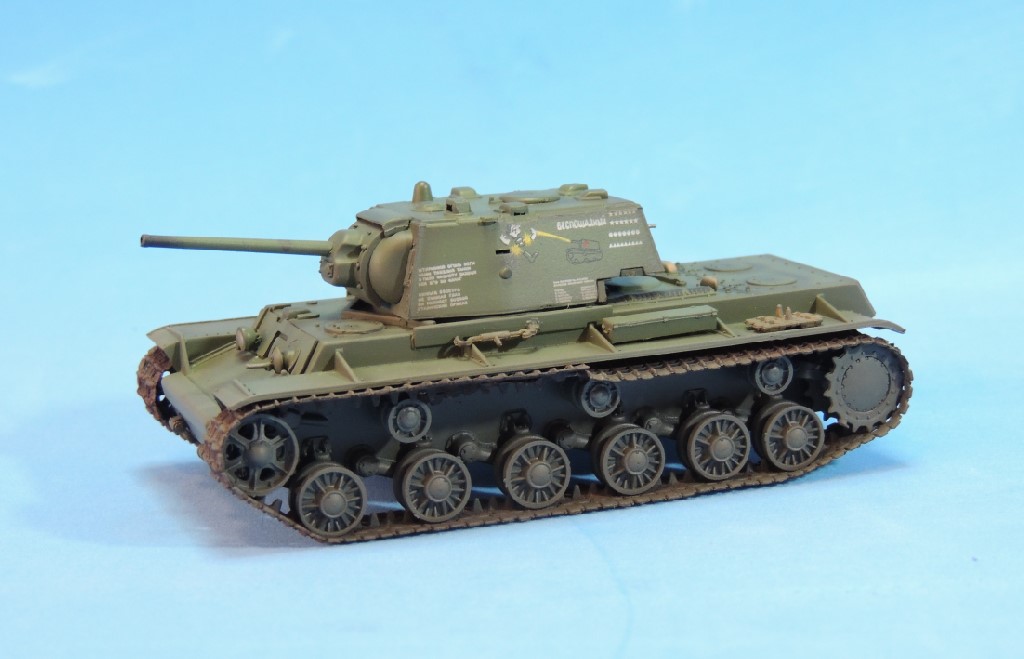 Note that the turret is the correct Model 1941 turret, with the skirt of the turret going straight back and then turning in at a sharp angle, as opposed to curving around the rear of the turret ring. Note also that EM did not make HM’s risible mistake in using on the starboard side the mirror image of “Besposhadniy” used on the port side of the turret.
Note that the turret is the correct Model 1941 turret, with the skirt of the turret going straight back and then turning in at a sharp angle, as opposed to curving around the rear of the turret ring. Note also that EM did not make HM’s risible mistake in using on the starboard side the mirror image of “Besposhadniy” used on the port side of the turret. 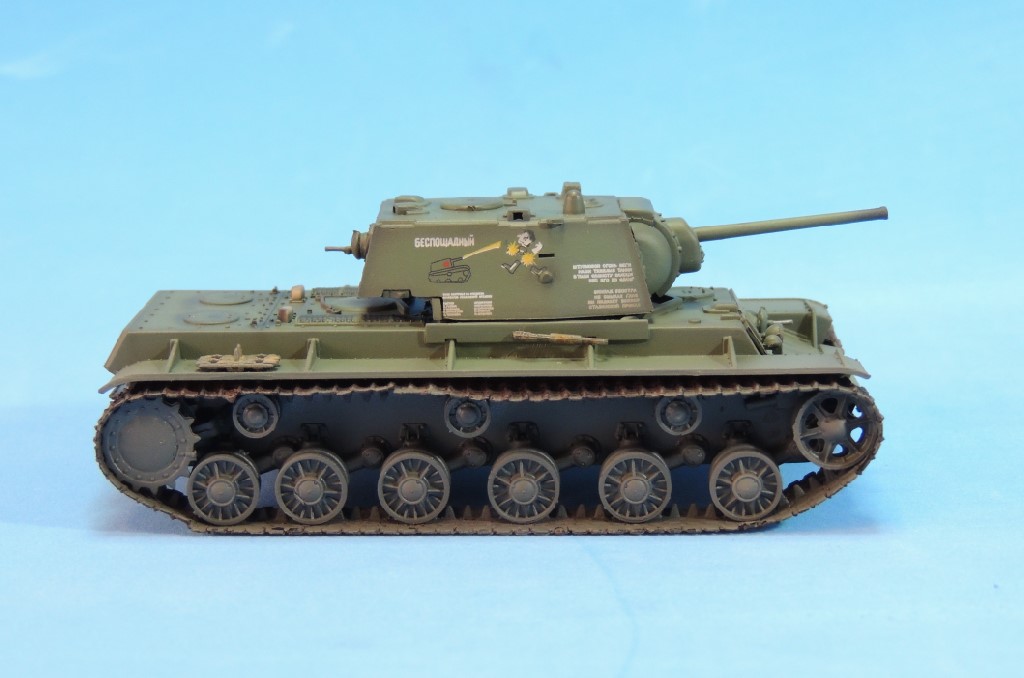 Note also that, unlike HM, EM used the correct later type of road wheels. In defense of HM, the wheels could have been changed in the field; a turret swap, however, would be highly improbable.
Note also that, unlike HM, EM used the correct later type of road wheels. In defense of HM, the wheels could have been changed in the field; a turret swap, however, would be highly improbable.
Here’s a rear-side view. Note that EM also used the correct hull with a sharply angled rear, as opposed to HM, which used the curved rear.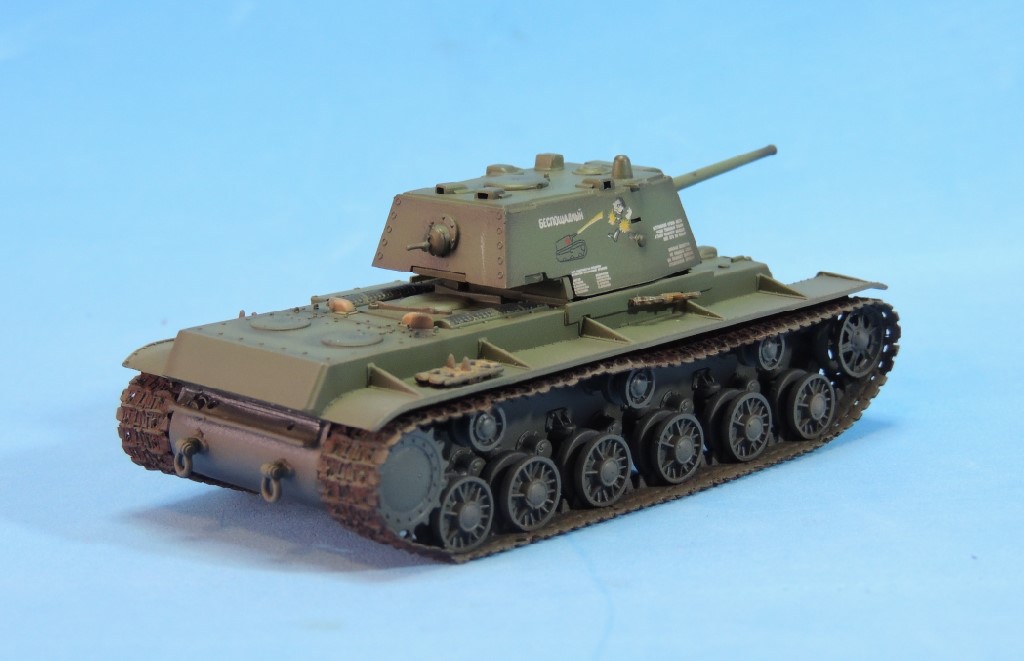 Here’s a close-up photo of the EM turret. While EM used the correct turret, note that the tampo-applied markings are not as well defined as those on the HM. Though they’re not out of register, they’re simply not as crisp.
Here’s a close-up photo of the EM turret. While EM used the correct turret, note that the tampo-applied markings are not as well defined as those on the HM. Though they’re not out of register, they’re simply not as crisp.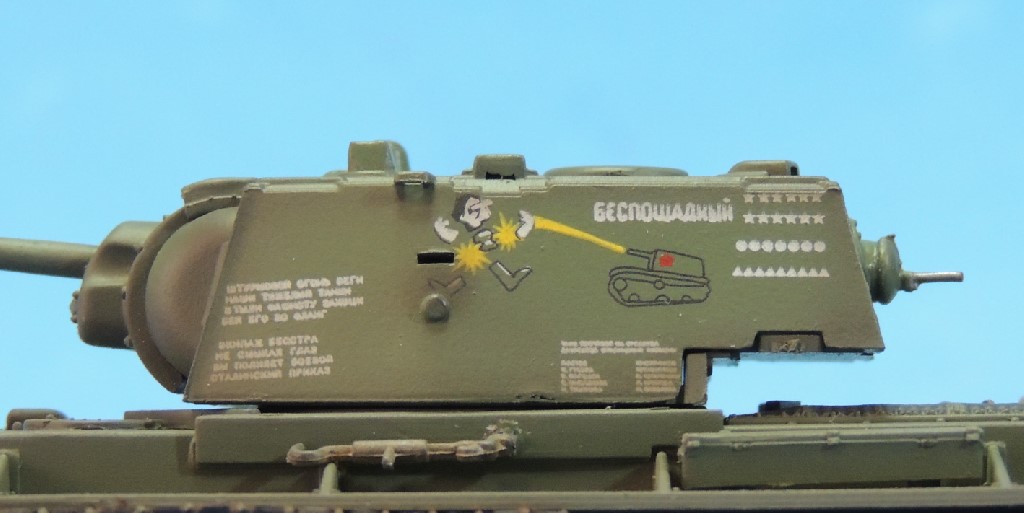 Finally, here are some side-by-side photos of the two, with the HM on the left and the EM on the right.
Finally, here are some side-by-side photos of the two, with the HM on the left and the EM on the right. 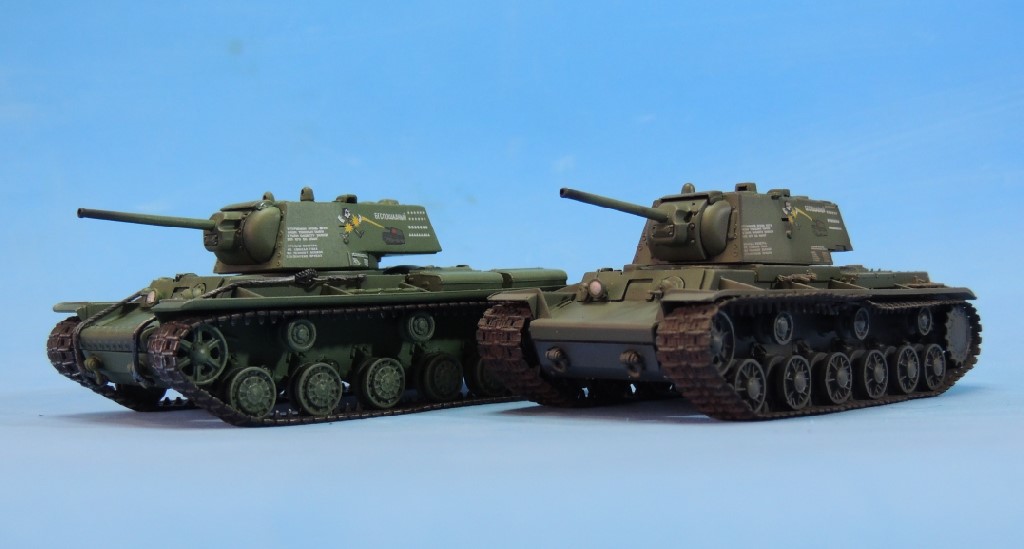
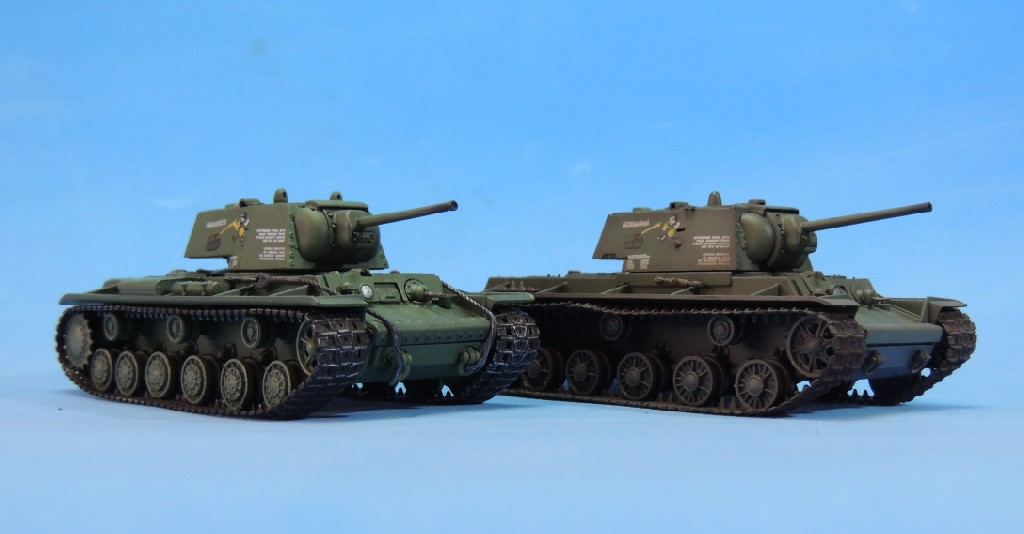


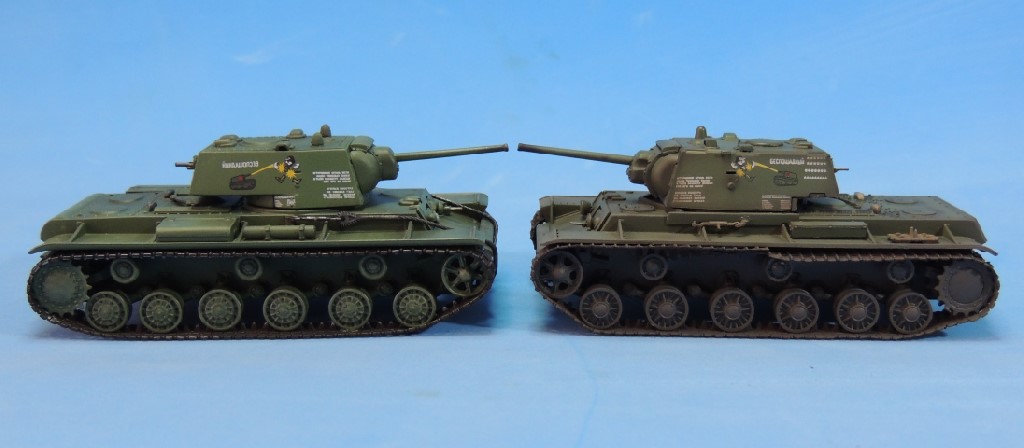 Here’s a lagniappe photo of the EM version to show off the Hat 8263 WW2 Russian Tank Riders.
Here’s a lagniappe photo of the EM version to show off the Hat 8263 WW2 Russian Tank Riders.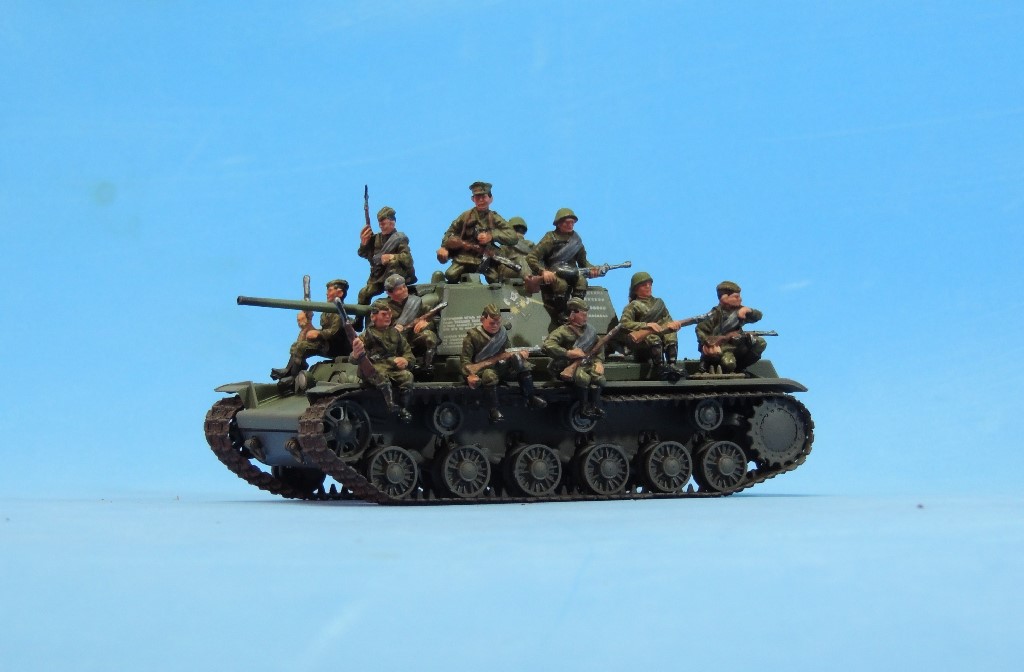 The Upshot
The Upshot
While I’m tolerant of most imperfections in a model, I agonize where the inaccuracy lies in the use of a wrong turret or hull – characteristics that I consider immutable. By that standard, the HM “Besposhadniy” — with its incorrect turret, rear hull, and road wheels — is fatally flawed. The absurd error in using the mirror image of “Besposhadniy” on the starboard side exacerbates the problem.
The EM version, on the other hand, is accurate throughout, though the lower quality of its finish and markings leave something to be desired. Thus, we’re left with a difficult choice: HM’s inaccurate high quality versus EM’s accurate but lower quality. I leave that choice to the reader as I love them both; they both represent an illustrious tank with a fascinating origin, outstanding combat history, patriotic slogan, and striking artwork.
Final Thoughts
Collectors often forget that these models represent vehicles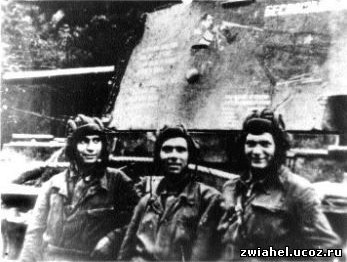 crewed by young men who fought and often died together. As a reminder, here’s a picture of three members of the crew, though I was unable to identify them. I would appreciate help in doing so.
crewed by young men who fought and often died together. As a reminder, here’s a picture of three members of the crew, though I was unable to identify them. I would appreciate help in doing so.
I’d like to leave the reader with a first-hand account of the “Besposhadniy” in combat from the memoirs of Yegor Sergeyevich Tsarapin, the mechanic-driver of the tank, taken from the aforementioned Russian Wikipedia entry. The passage vividly illustrates the tremendous courage of the crew:
In February of 1943, defensive fights started in north of Zhizdra. Blazing like a torch, “Besposhadniy” rushed towards the enemy artillery gun. The crew caught on fire, but continued attacking, ignoring the pain from their burns. Twenty meters, ten meters, and now the enemy artillery gun is being crushed under the heavy tank treads. Only then did the crew begin to put out the fire. I had a burnt back, a broken leg, and three fractured ribs. Egorov [the radio operator] could not feel his right hand. Filippov [senior mechanic-driver] wanted to help me out and take over the driver’s seat, but he was not able to as his lower back was badly burnt. We barely extinguished the flames on ourselves. You could see the crew members’ poorly dressed and still bleeding wounds through their ragged overalls, torn and burnt. We shouted to Fateev [the gunner], “you’re quite charred,” and he replied: “start the engine/move forward!” Collecting the last remnants of our energy, we once again rushed forward, knocking a Nazi tank along the way. By the time we reached our troops, Fateev [the gunner] was dead as well as Paul Khoroshilov [the commander]. We buried them together.
The “Besposhadniy” lasted just over nine months, from late May 1942 to early March 1943, before it was sent for repair. During that time, the tank crew shot down 27 enemy tanks, 9 mortars, 10 guns, 17 machine guns, 30 vehicles, and 13 units of armored vehicles, according to the Russian Wikipedia (though Zaloga reports different numbers). After the war, “Besposhadniy” was transferred to the Kubinka Tank Museum in Moscow, where, sadly, it was melted at the “Hammer and Sickle” Moscow plant in 1948.
———————————————————————————————————–
I want to thank Tim L., friend and fellow collector who provided invaluable research, photos, and observations. Sincere thanks also to my colleague Elmira B., who translated the first-hand account of the “Besposhadniy” in battle. Thanks also to my friend Joao S., of Cascais, whose incredible painting skills brought the Hat figures to life.


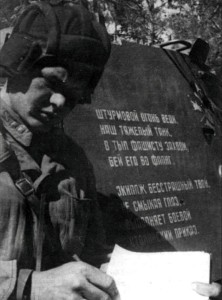
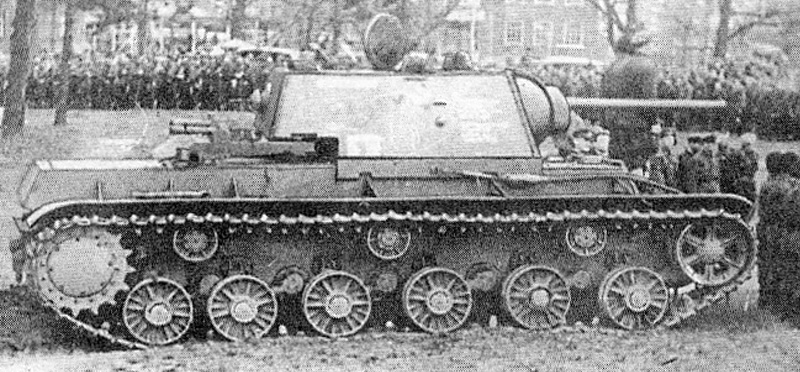


















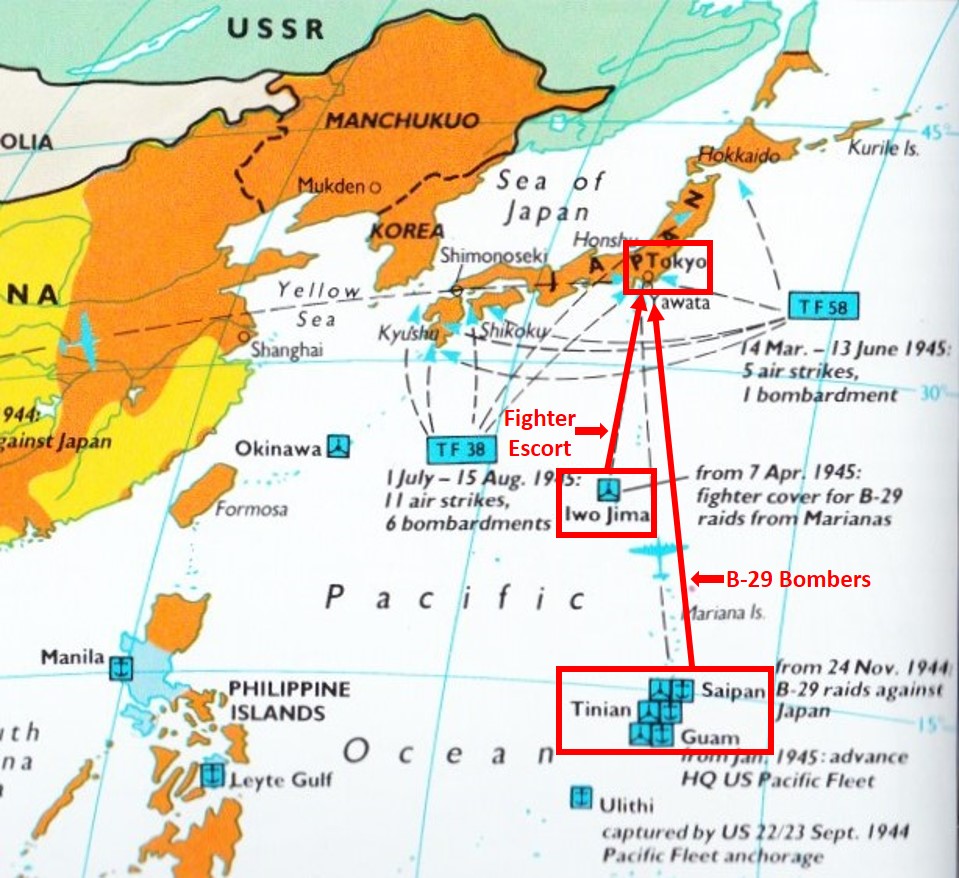
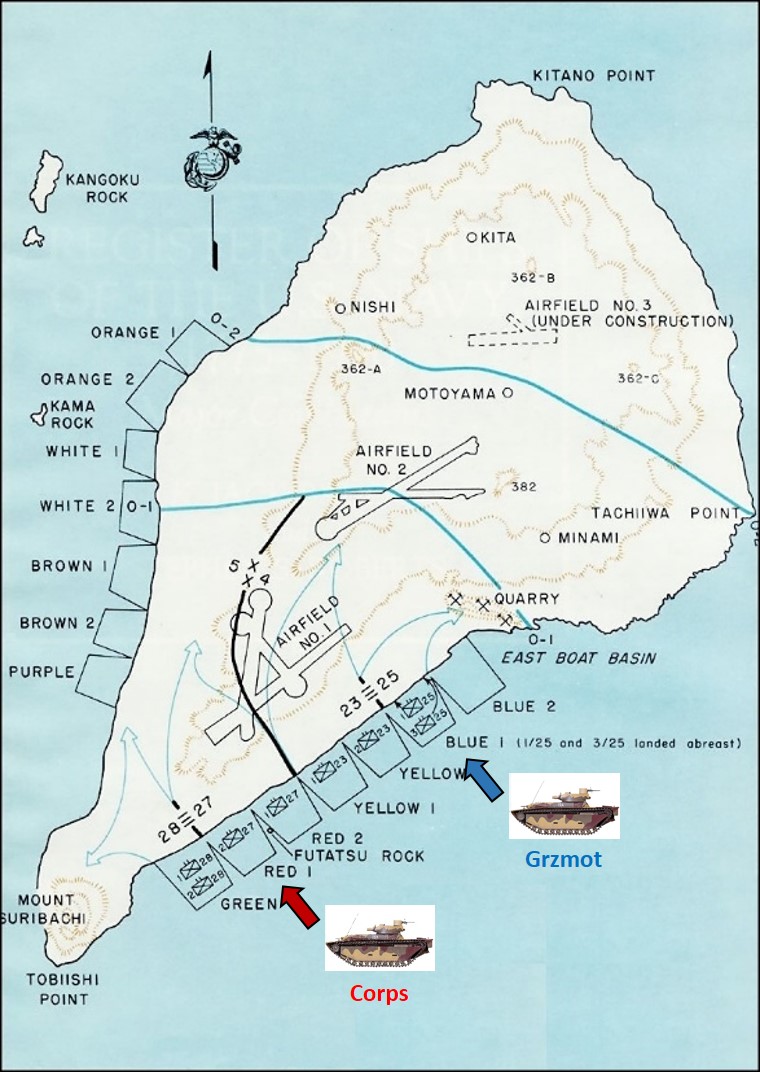
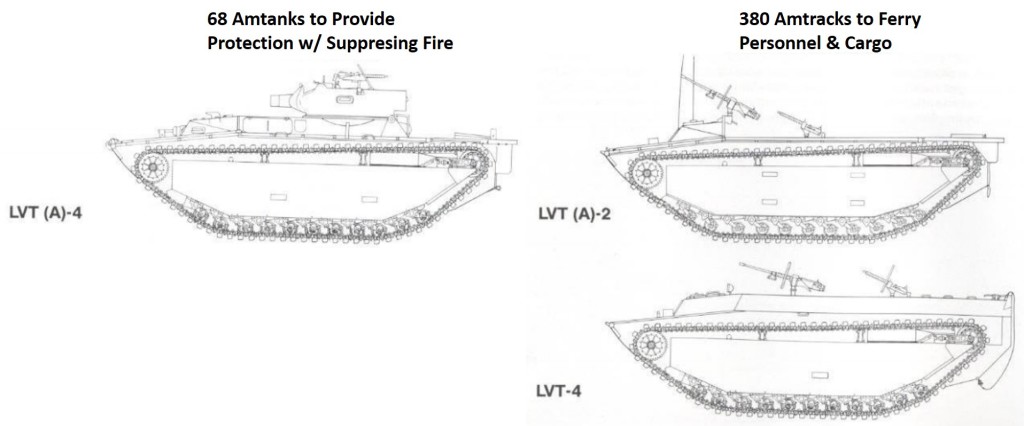
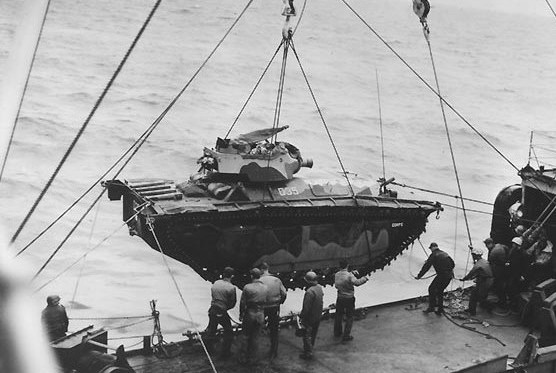

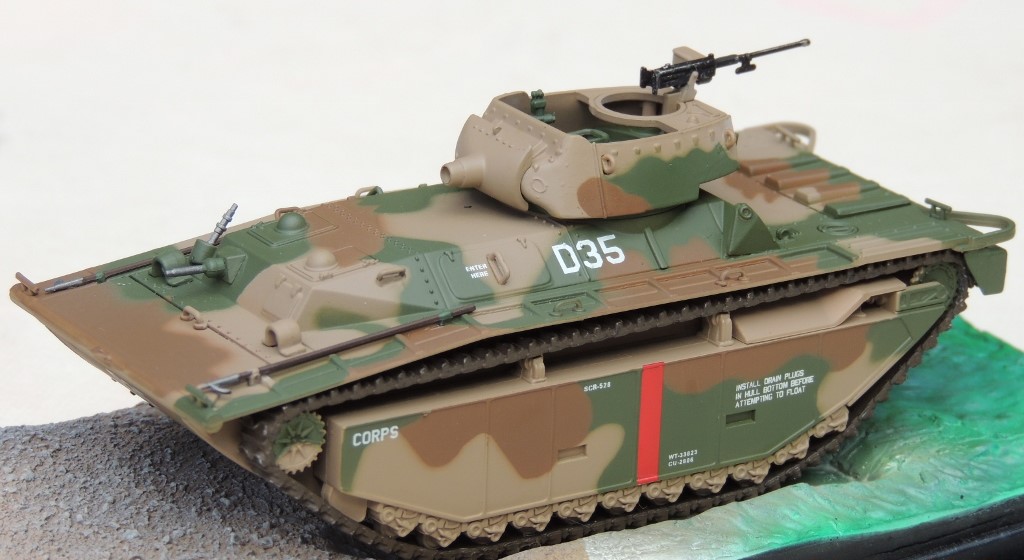

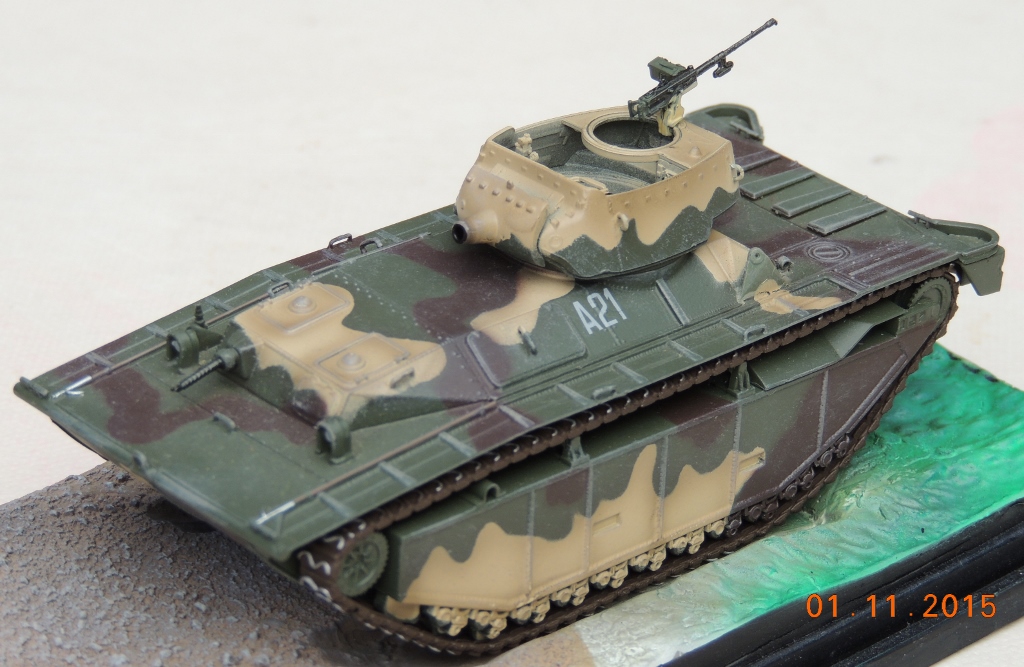
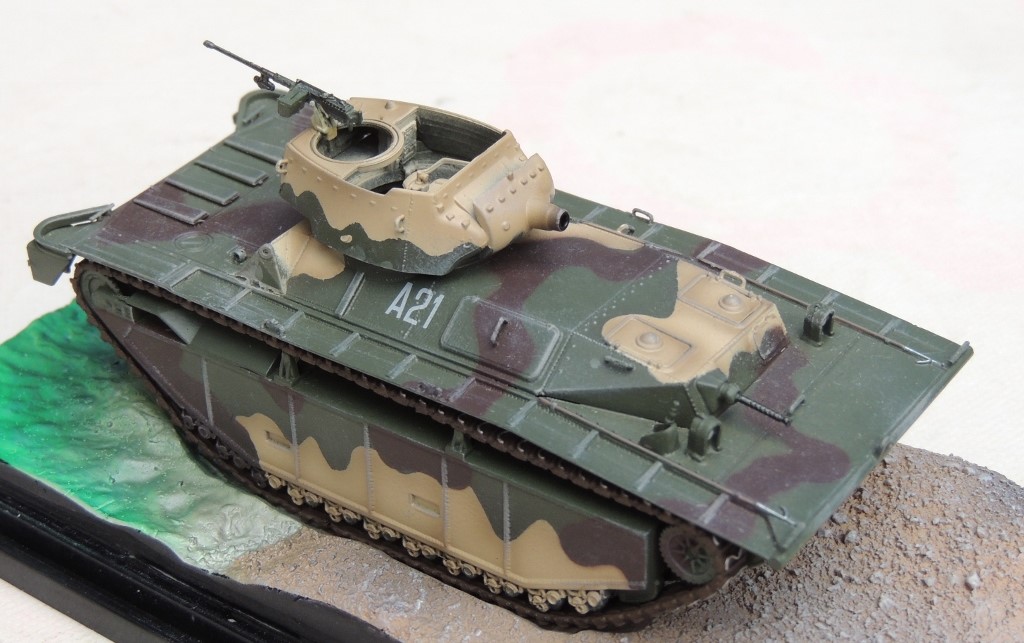
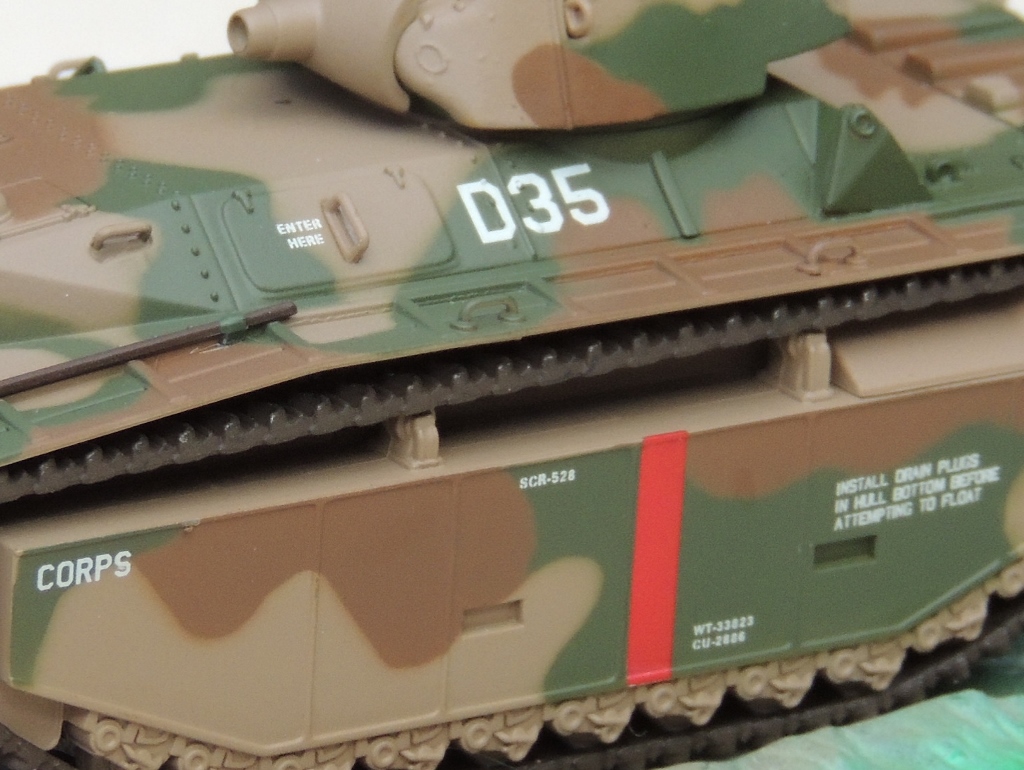
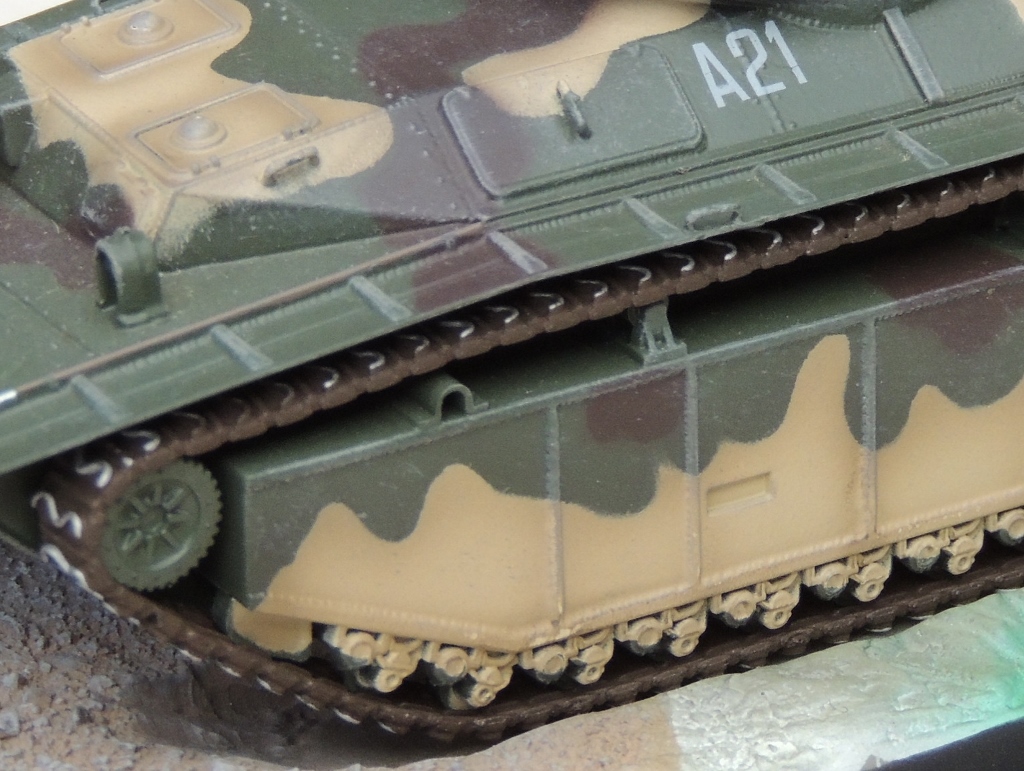
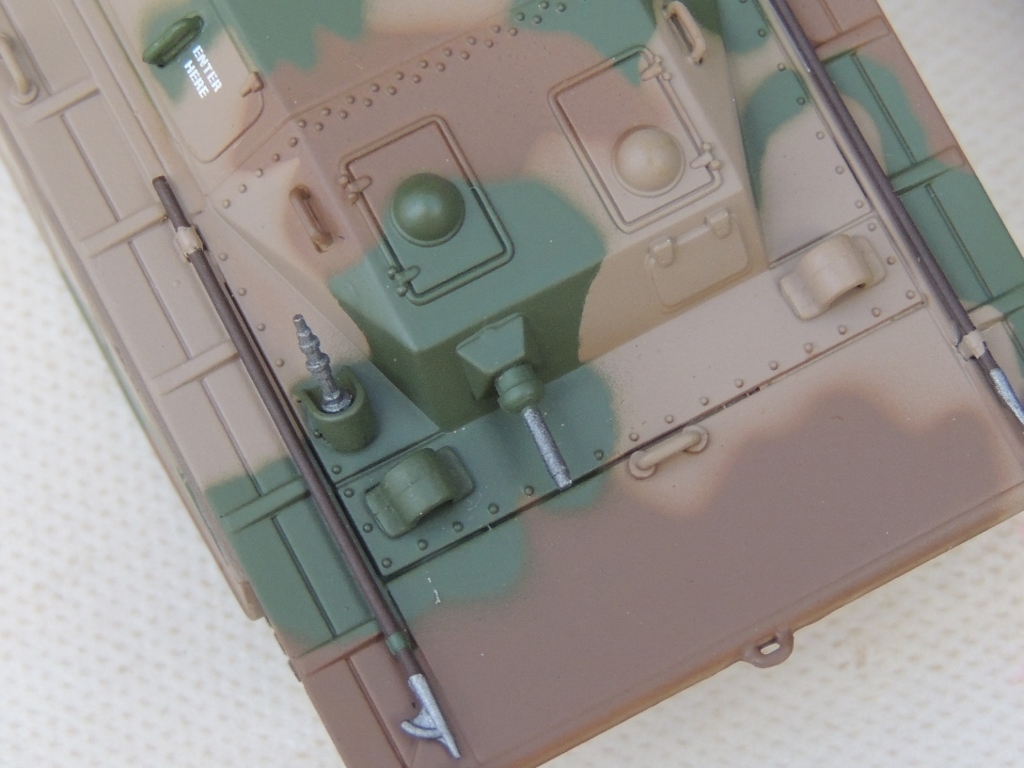

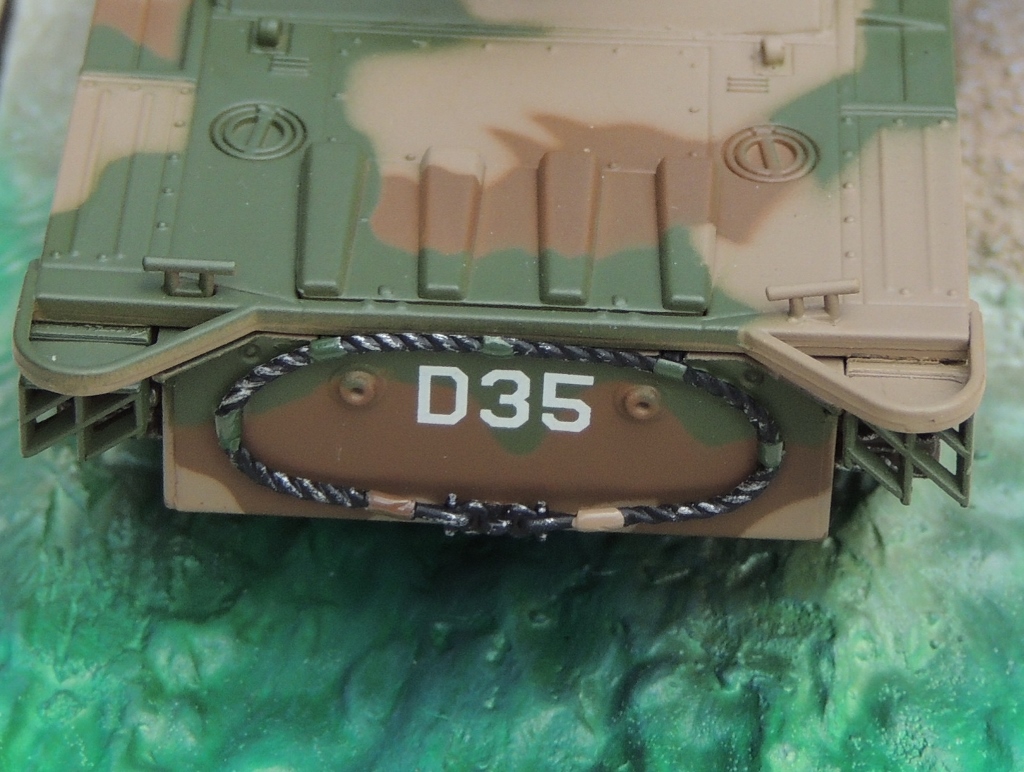
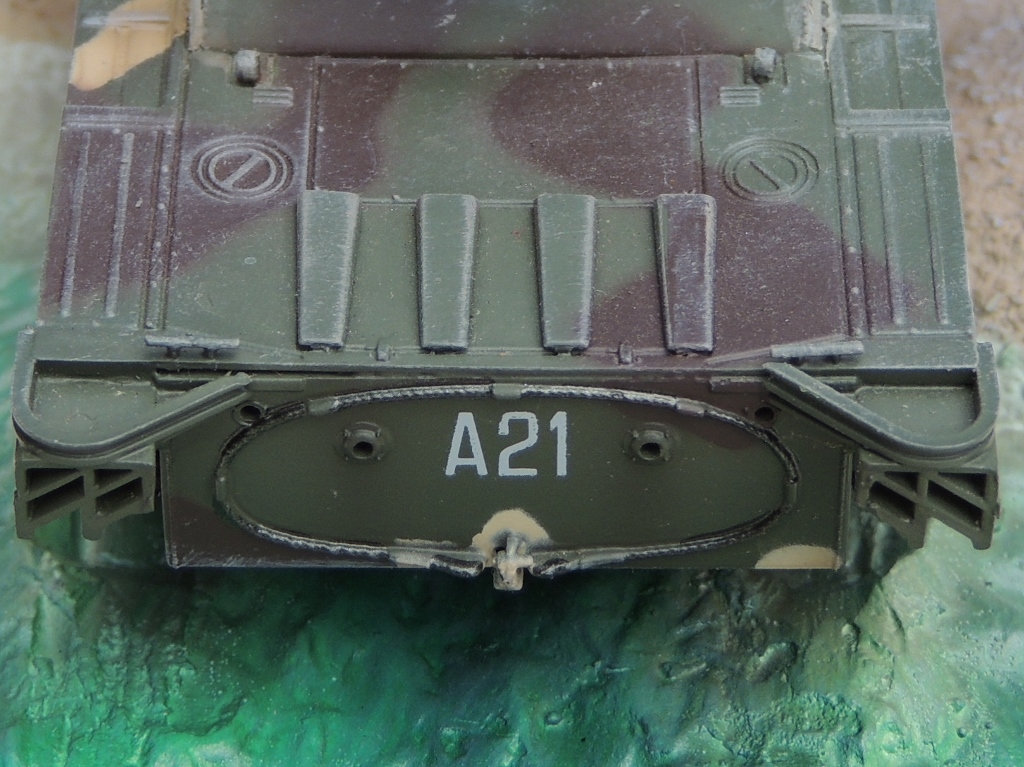
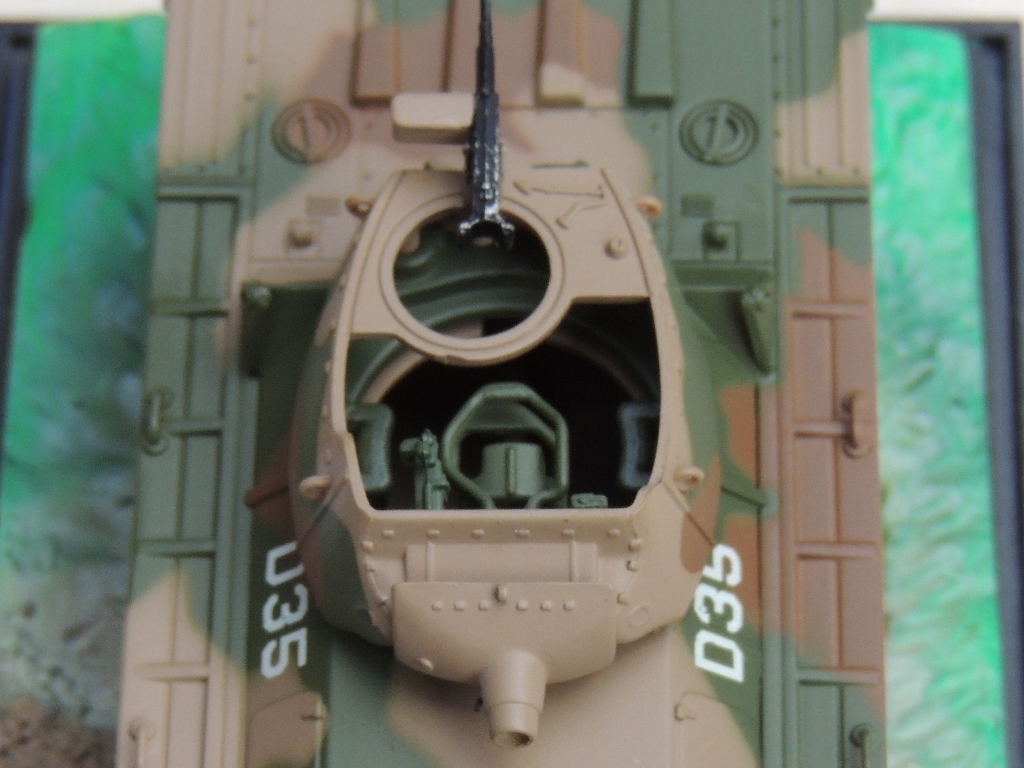
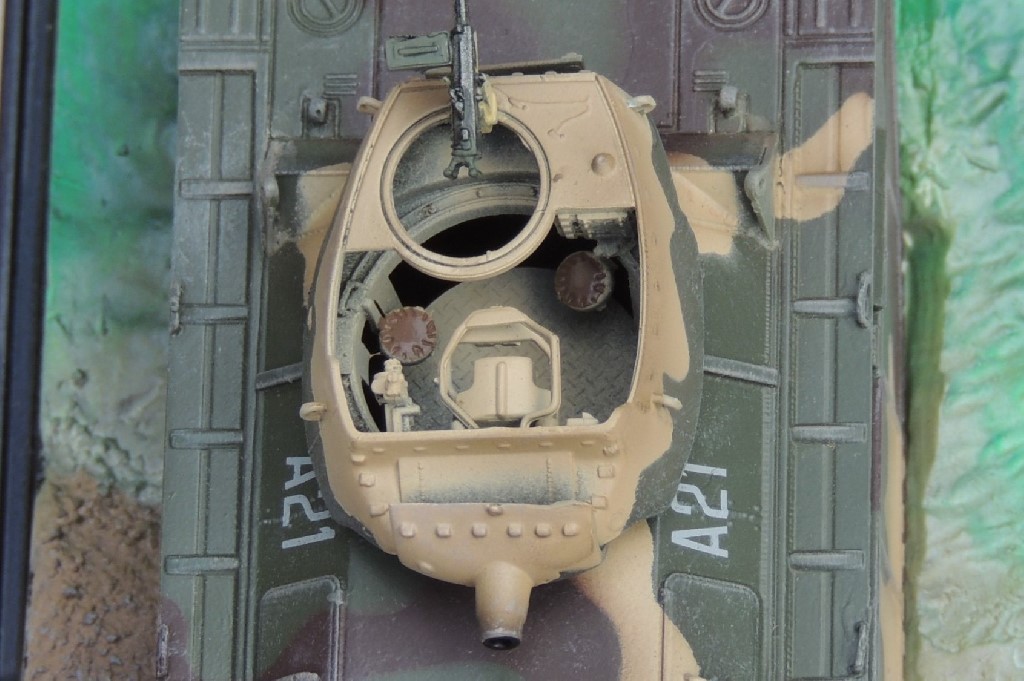

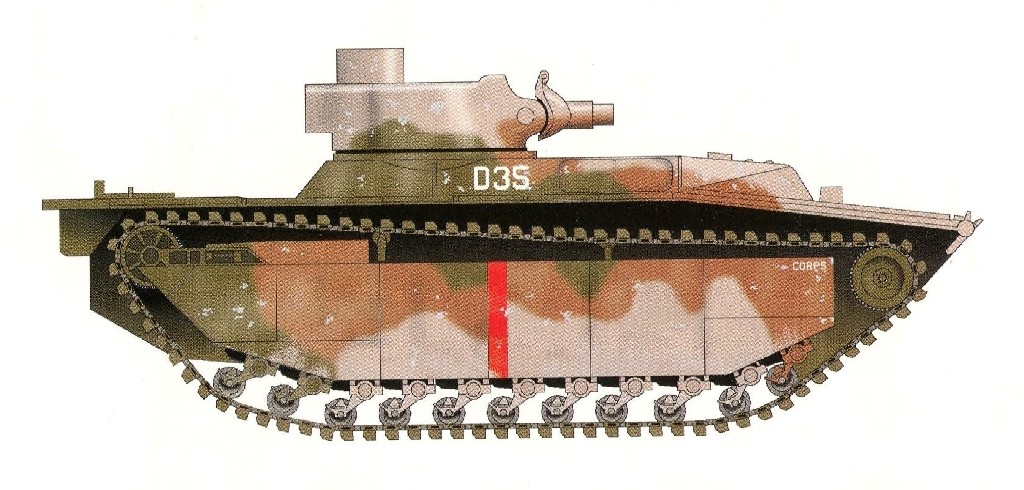
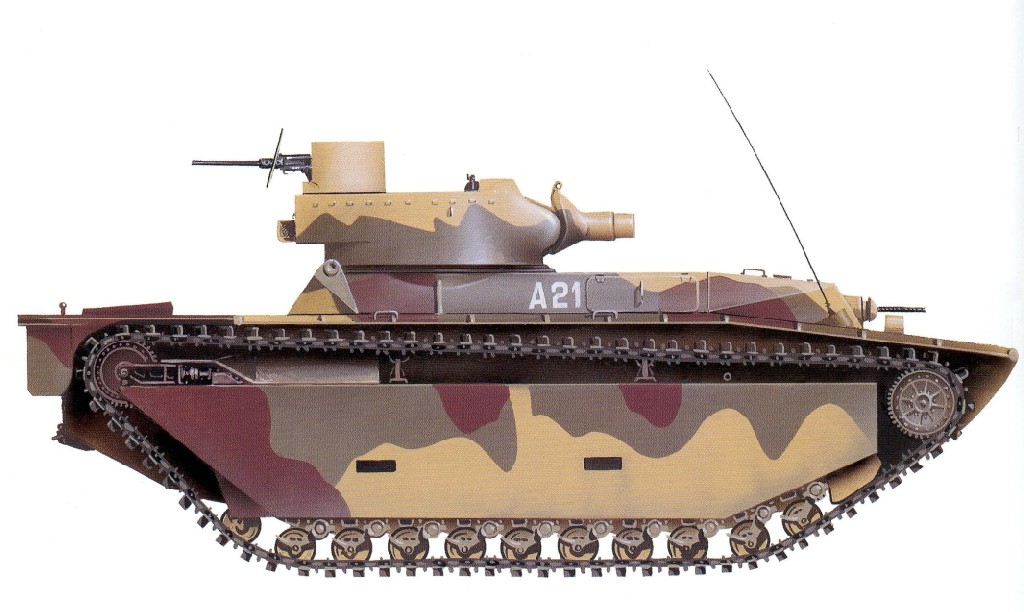

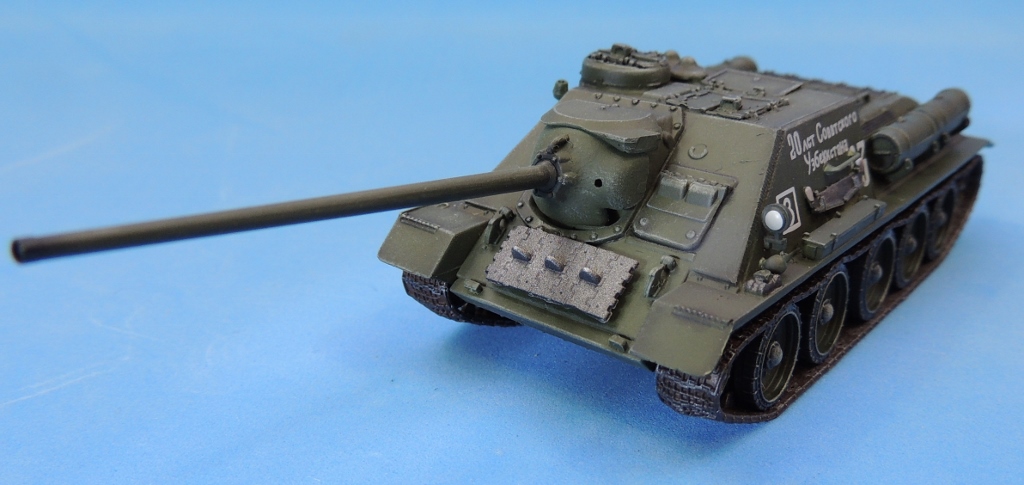
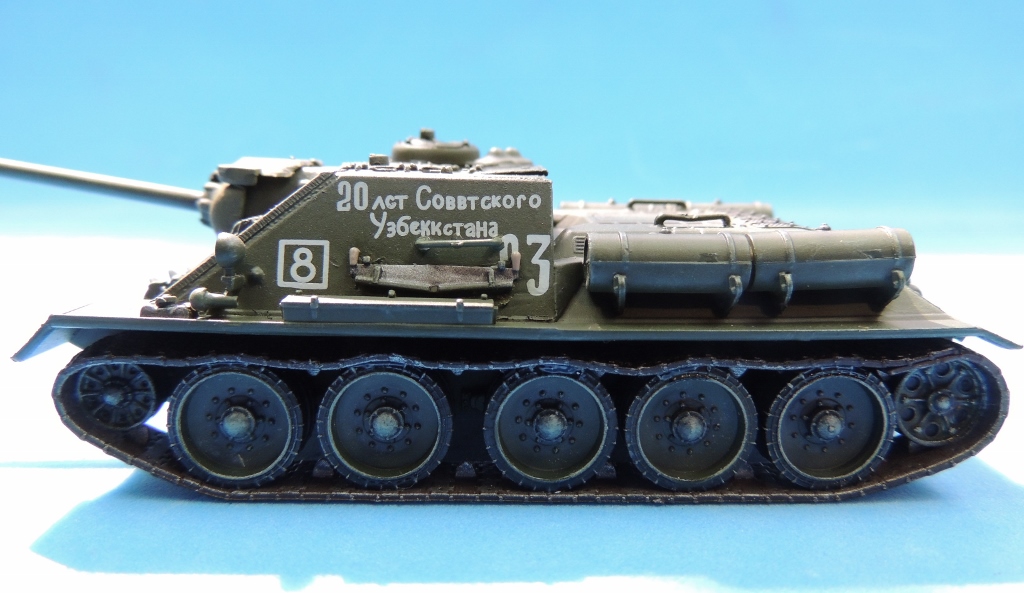
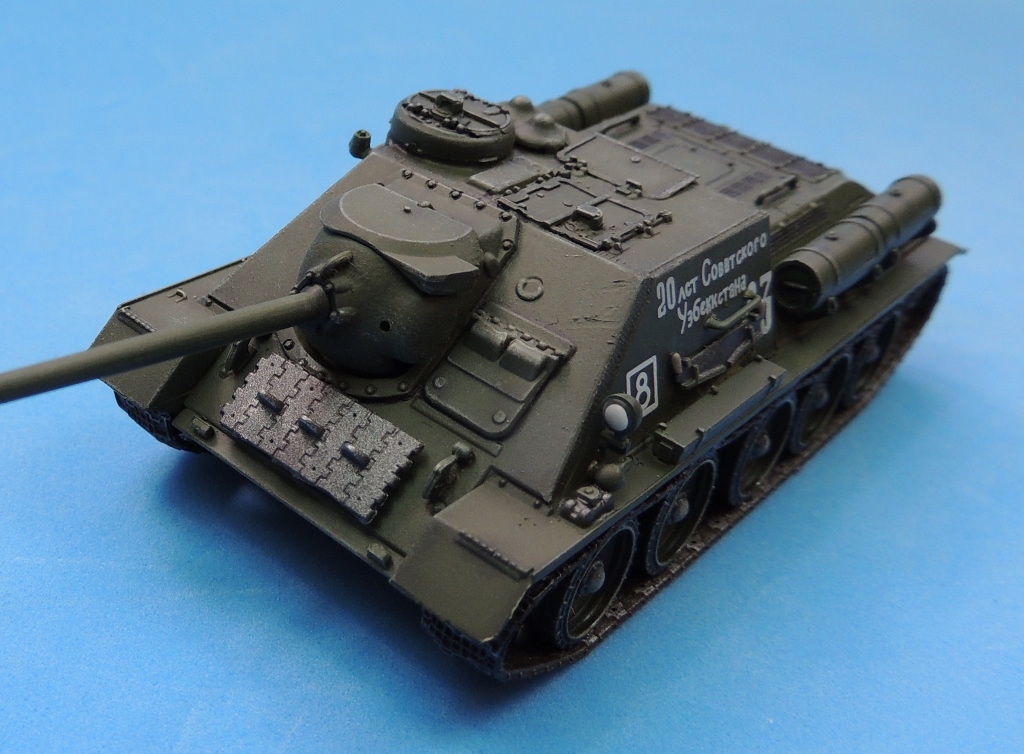
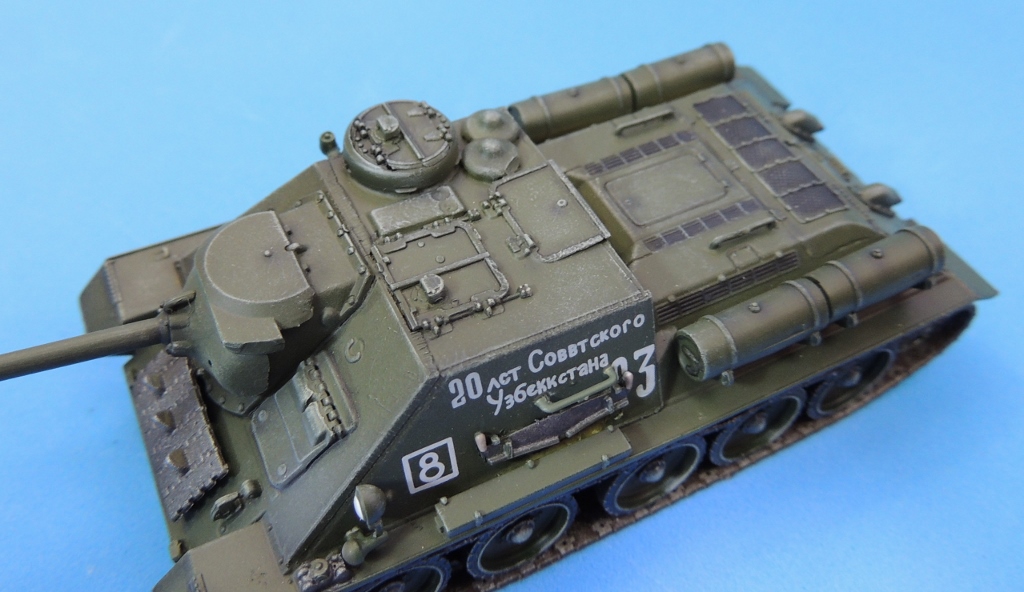
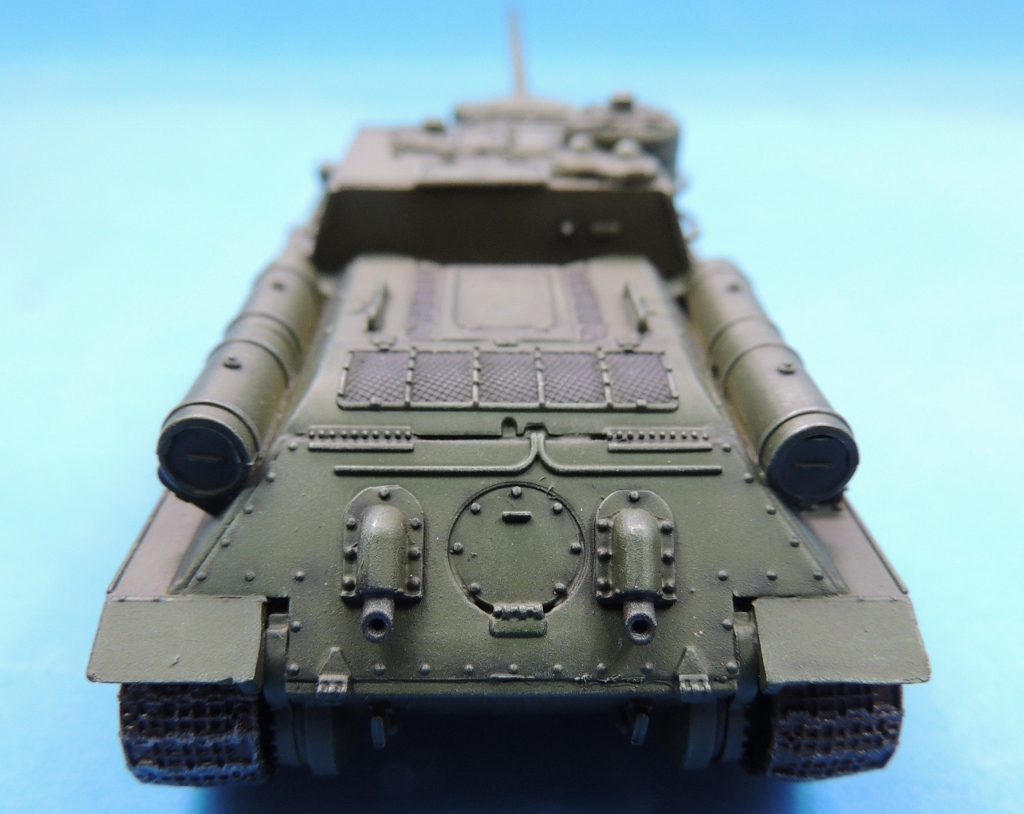
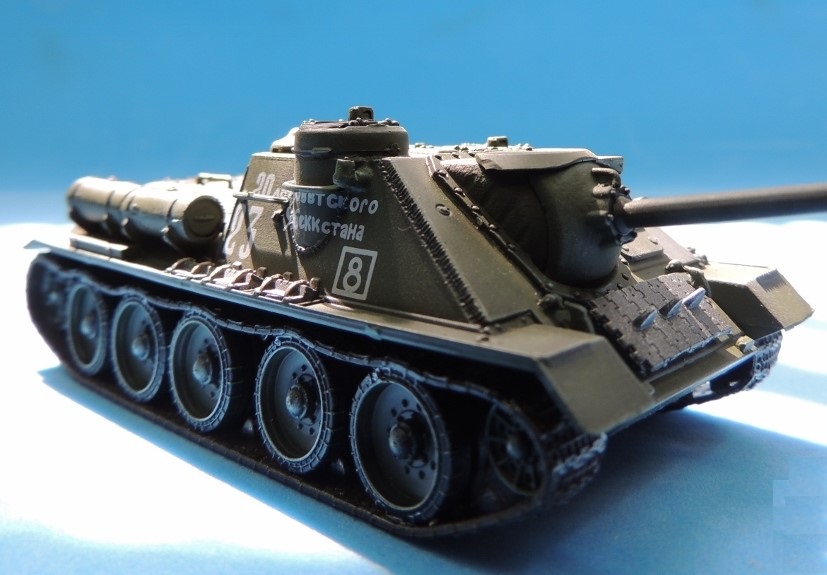
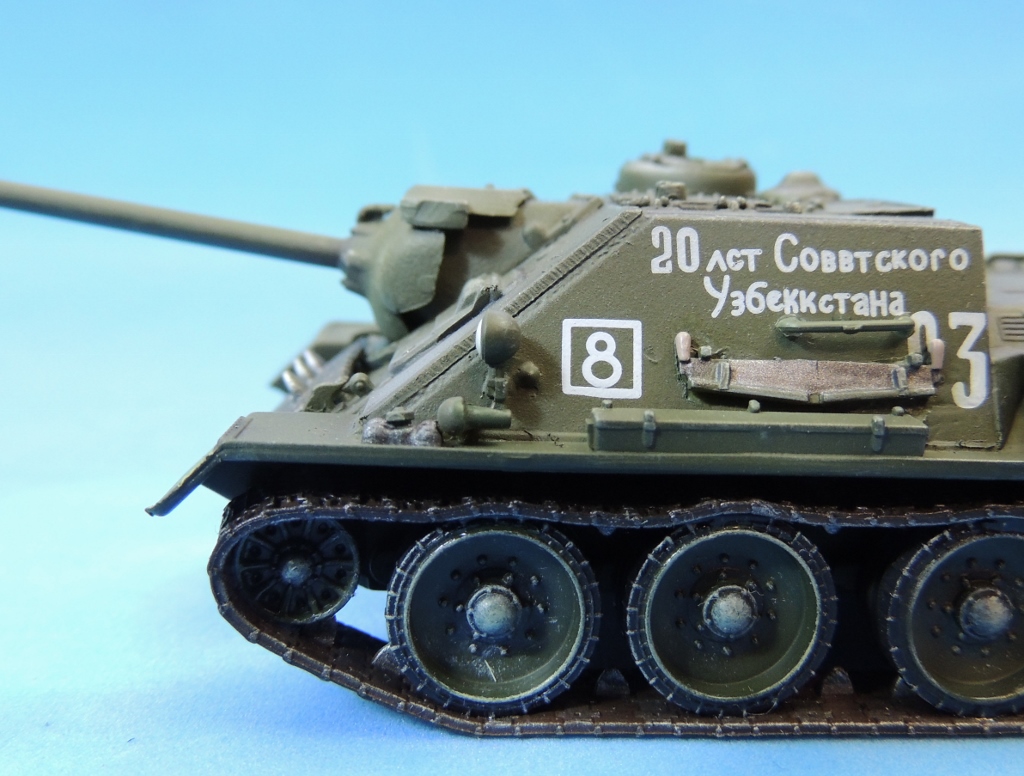

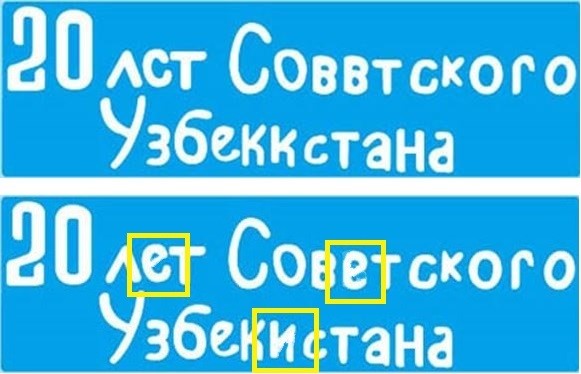
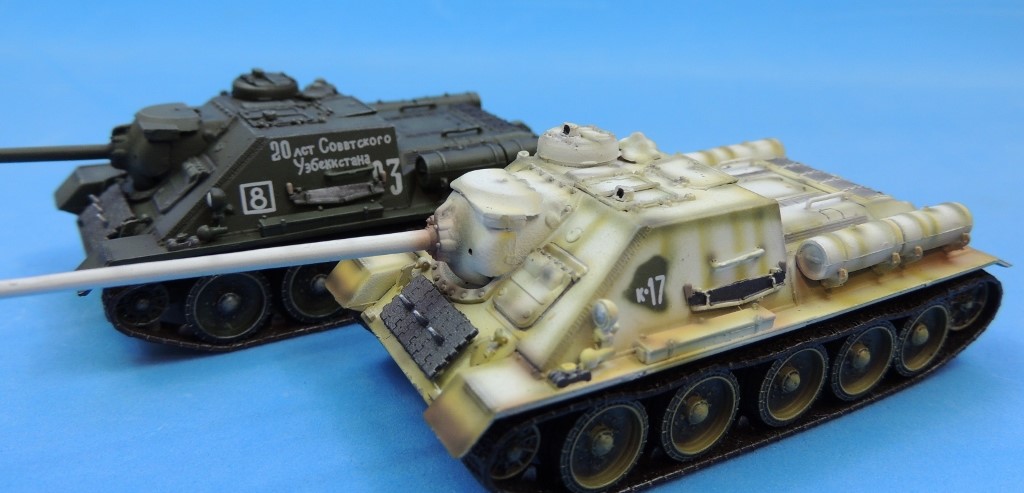

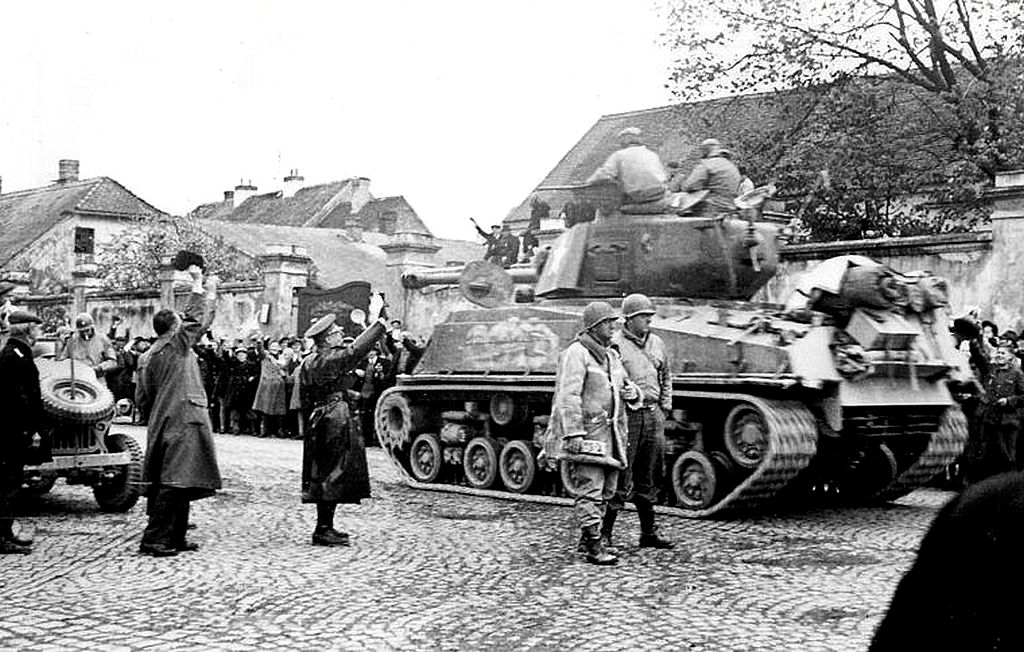
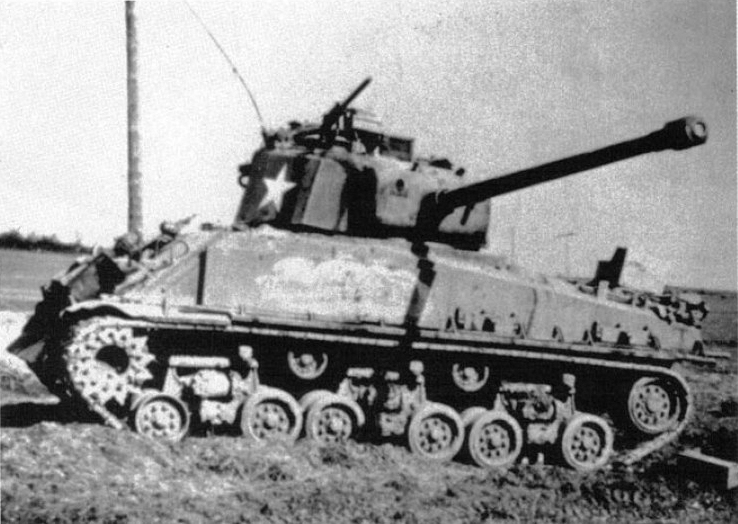
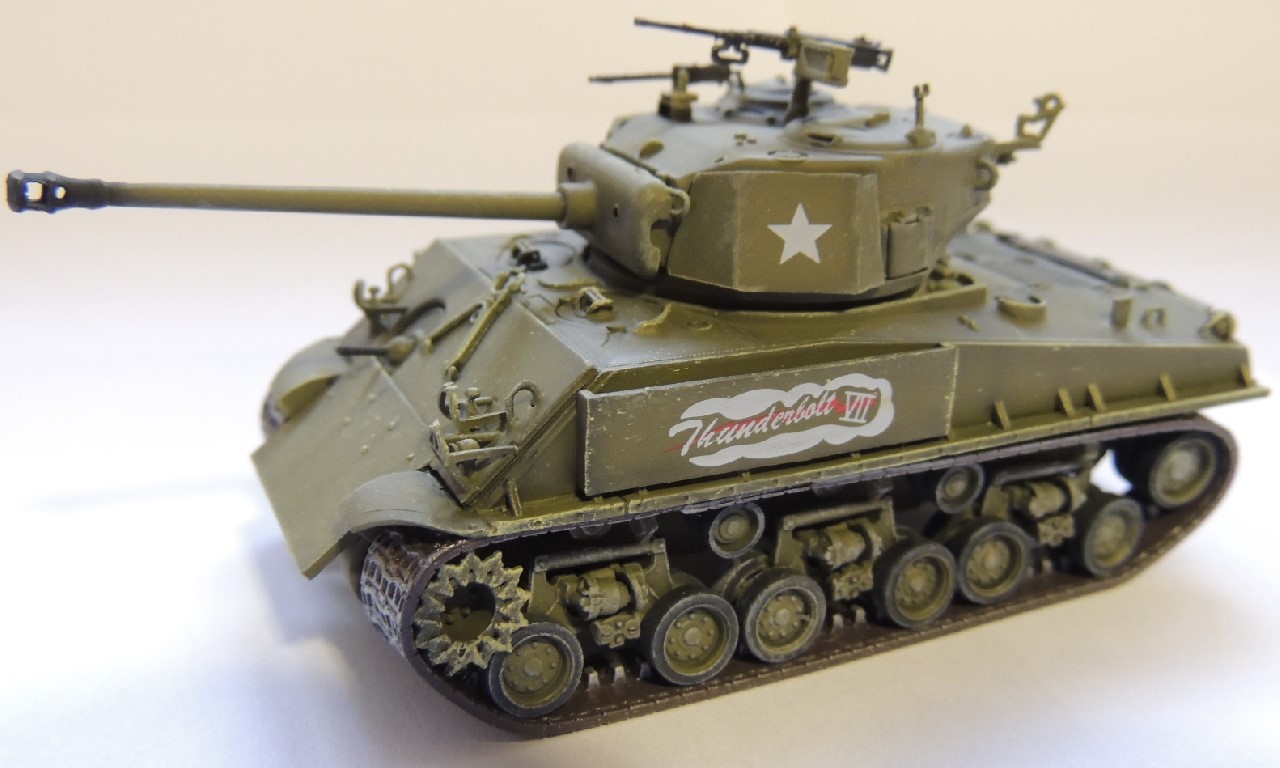
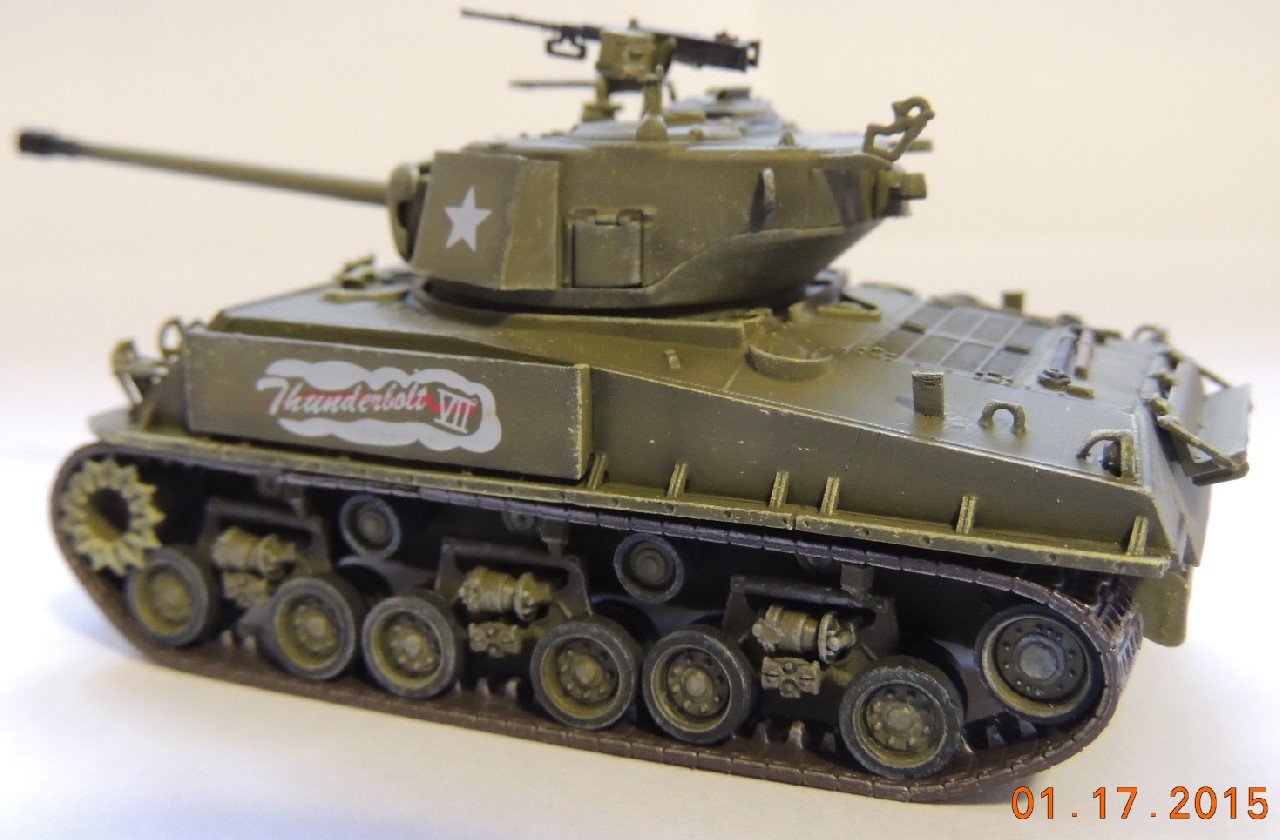
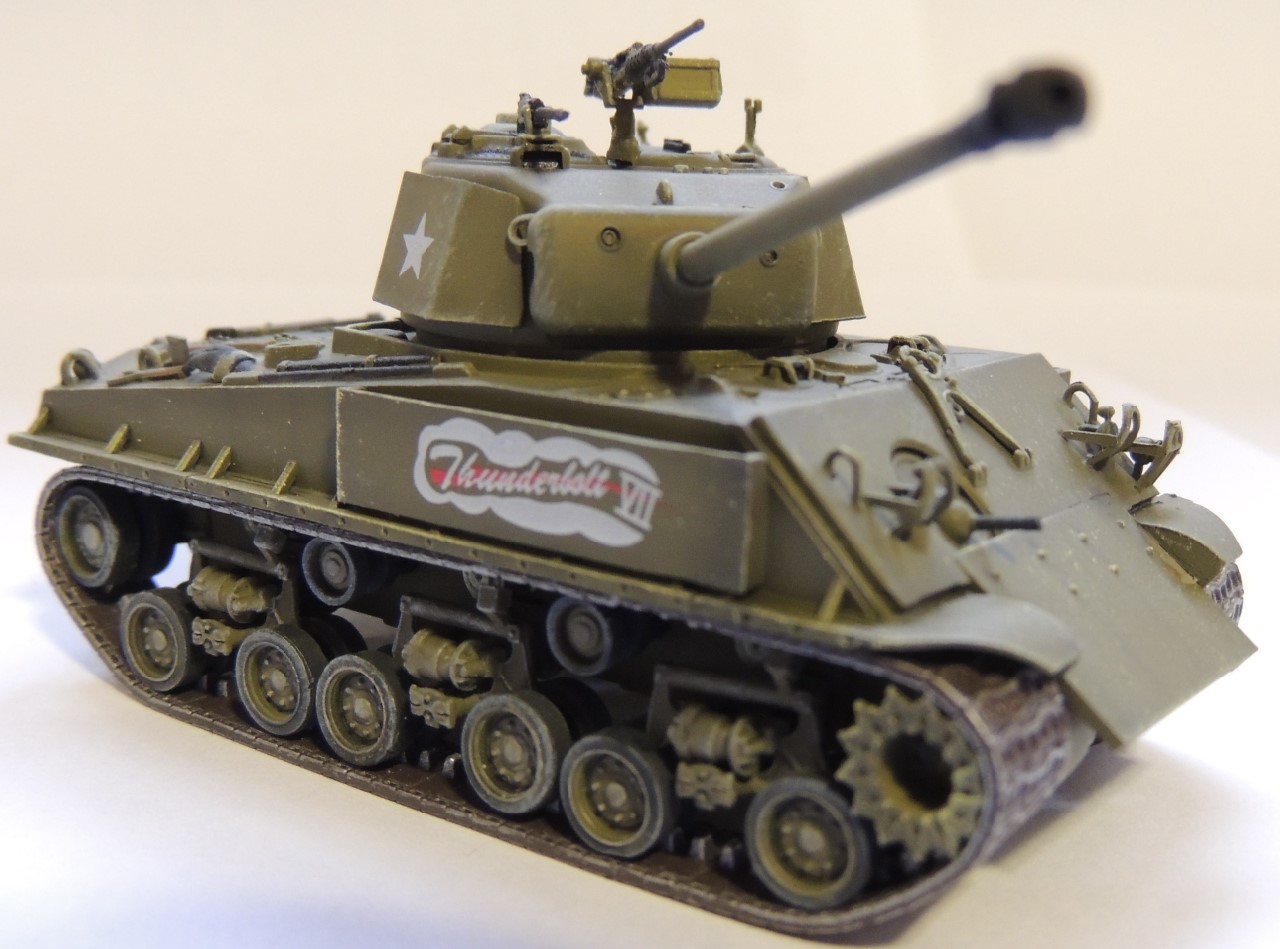
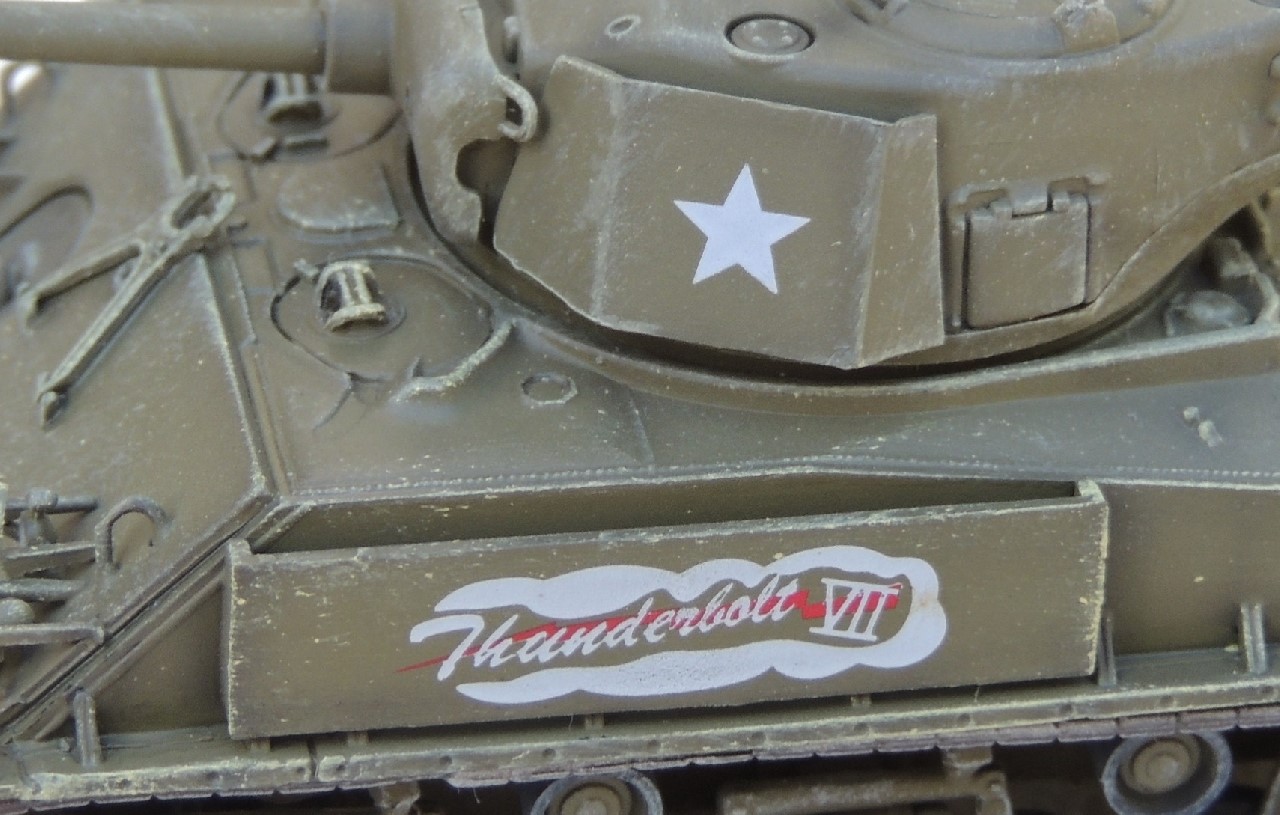


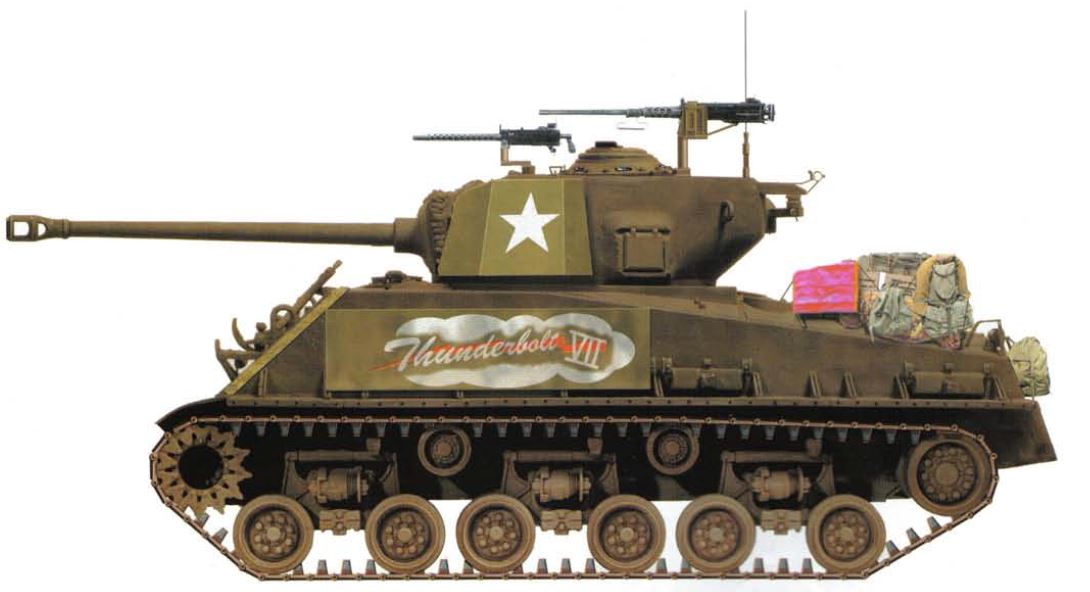
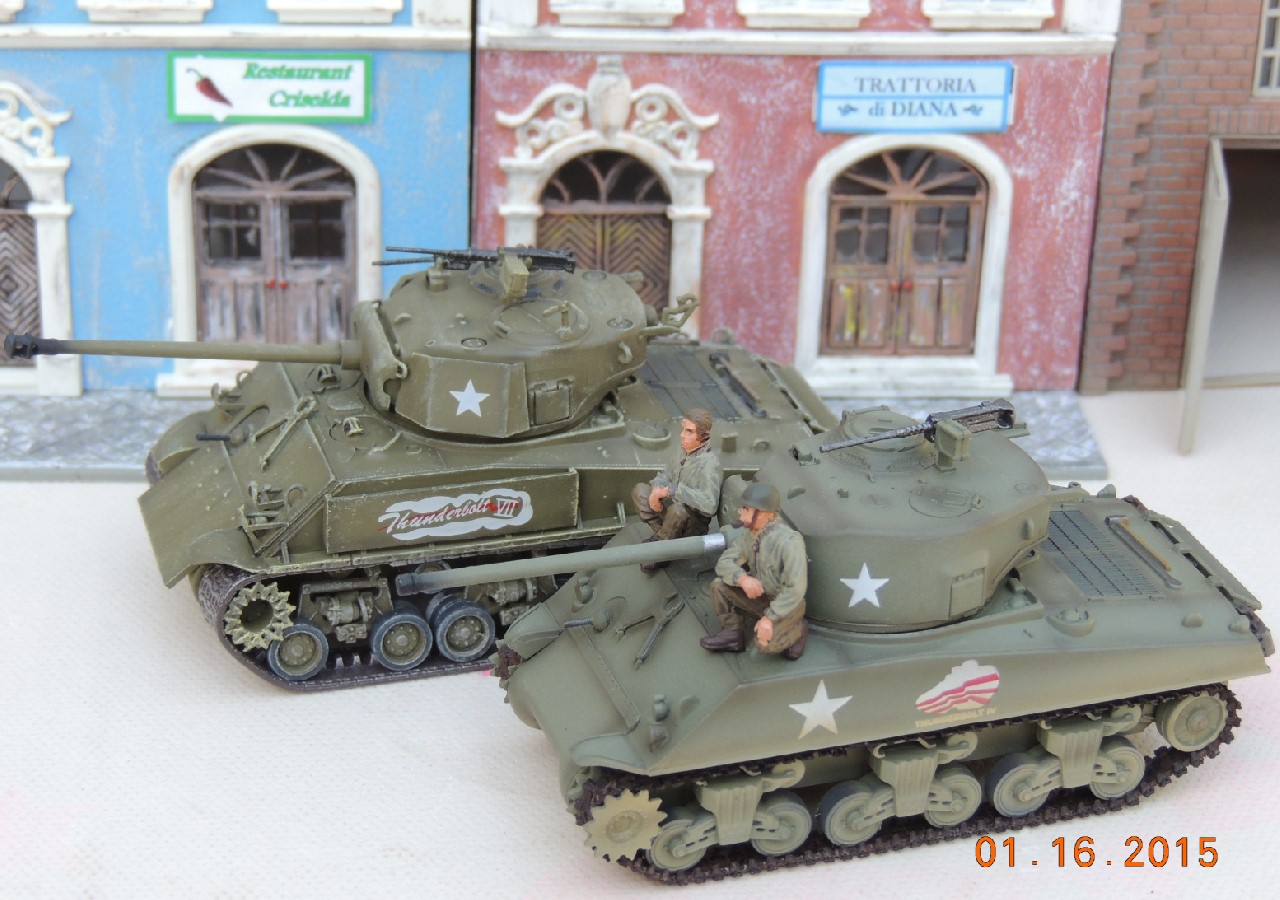




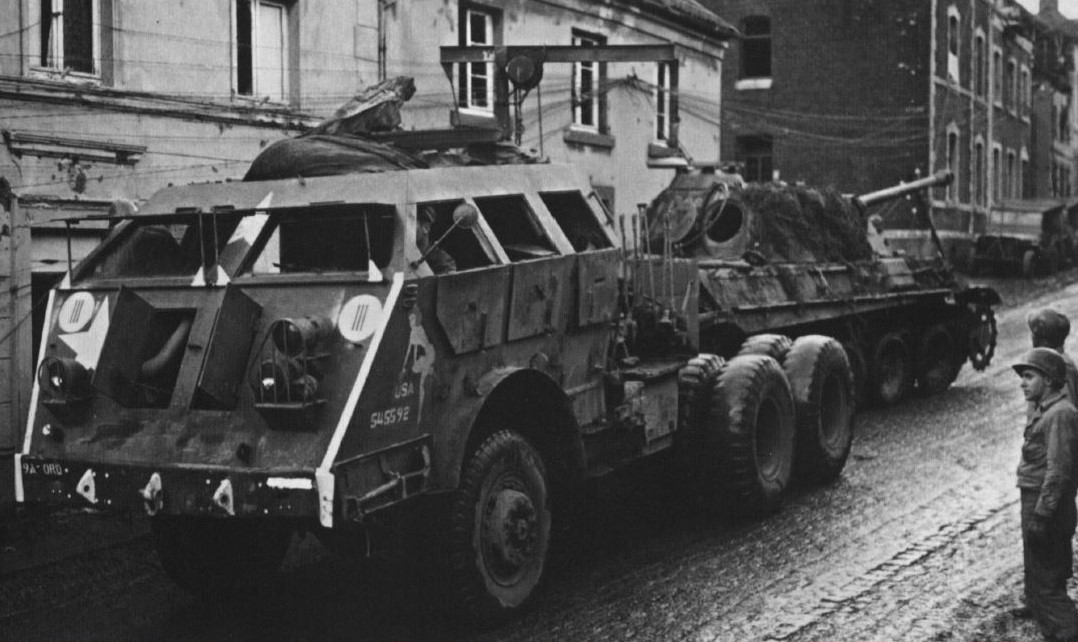
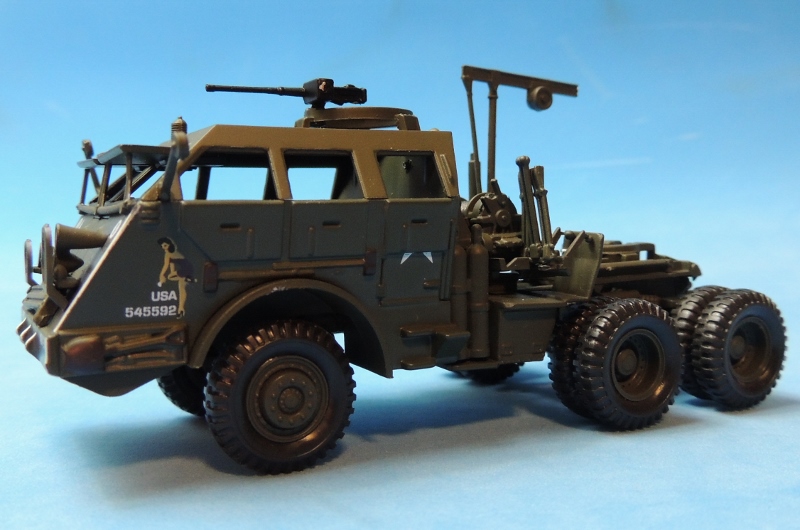
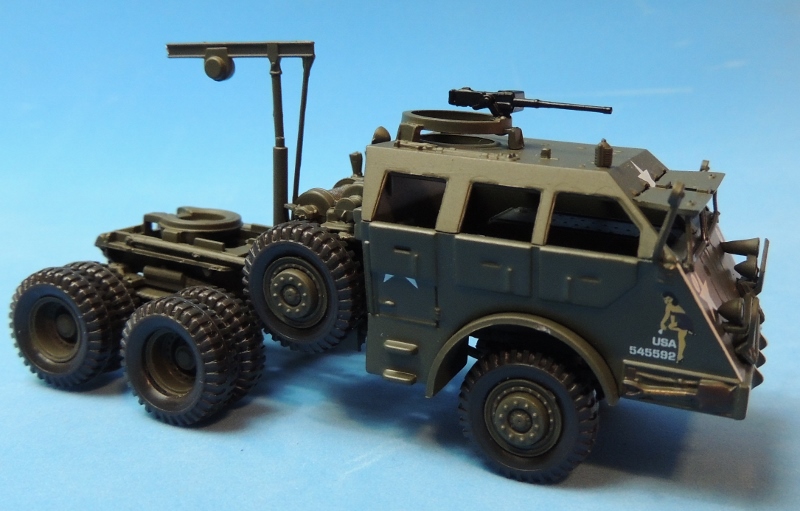
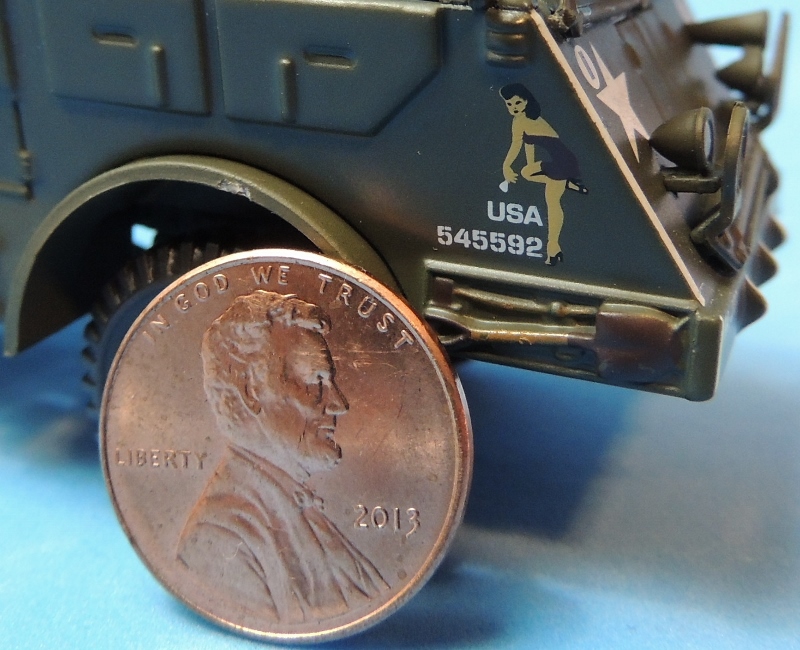
 I would respectfully ask that anybody who knows of other pin-ups on 1/72 models or photos of non-aircraft WWII vehicles with pin-up art post a comment. Perhaps at some point in the future someone will use our collective research to write a book on the subject — a book that is sorely missing at the moment.
I would respectfully ask that anybody who knows of other pin-ups on 1/72 models or photos of non-aircraft WWII vehicles with pin-up art post a comment. Perhaps at some point in the future someone will use our collective research to write a book on the subject — a book that is sorely missing at the moment.
